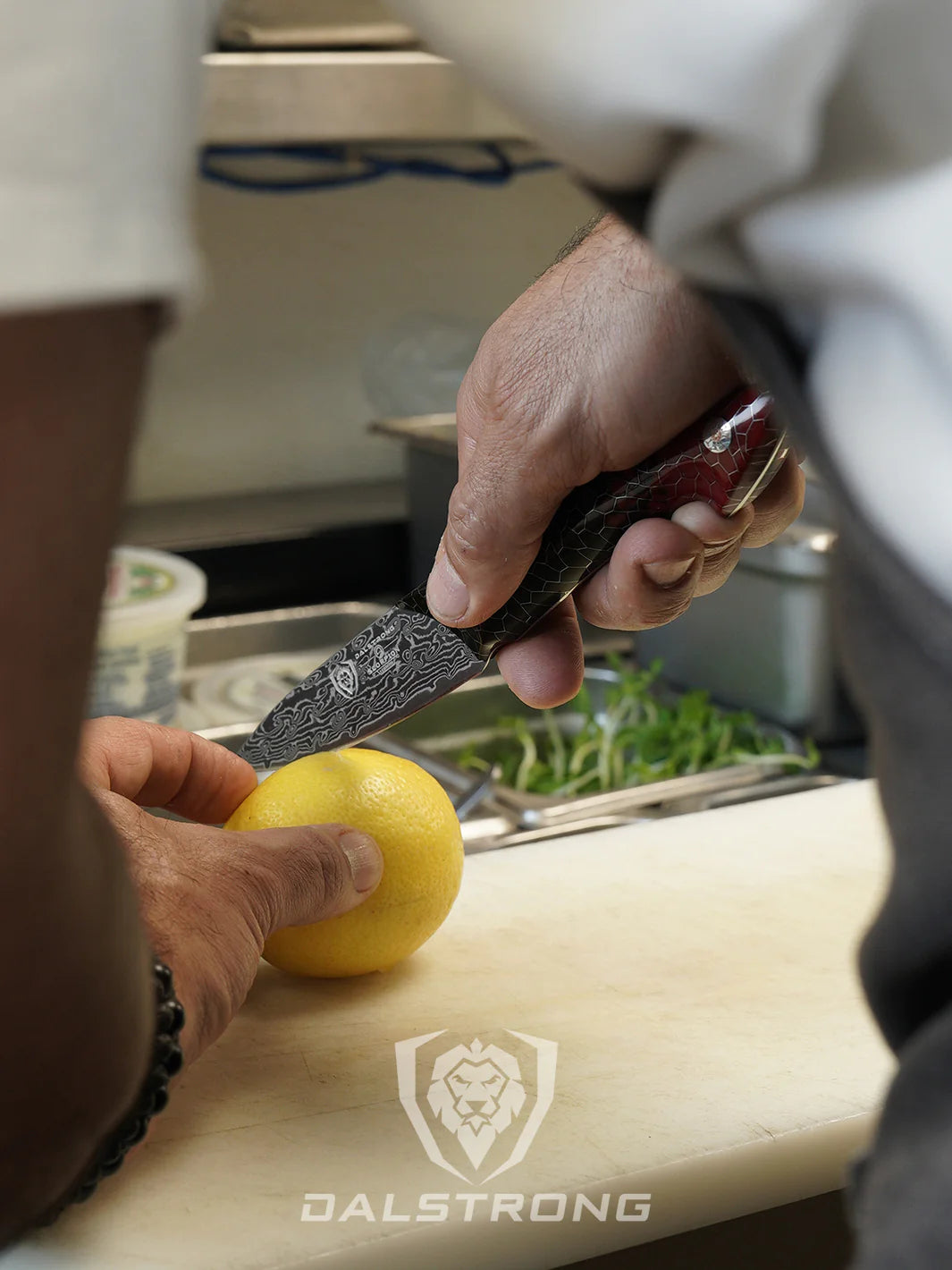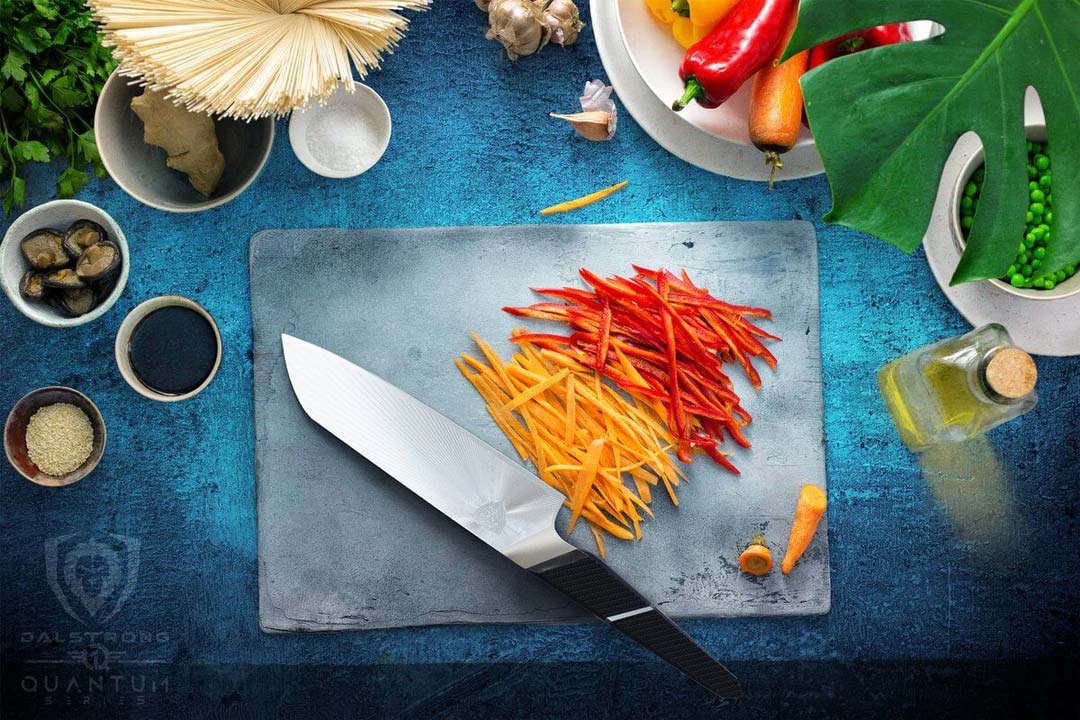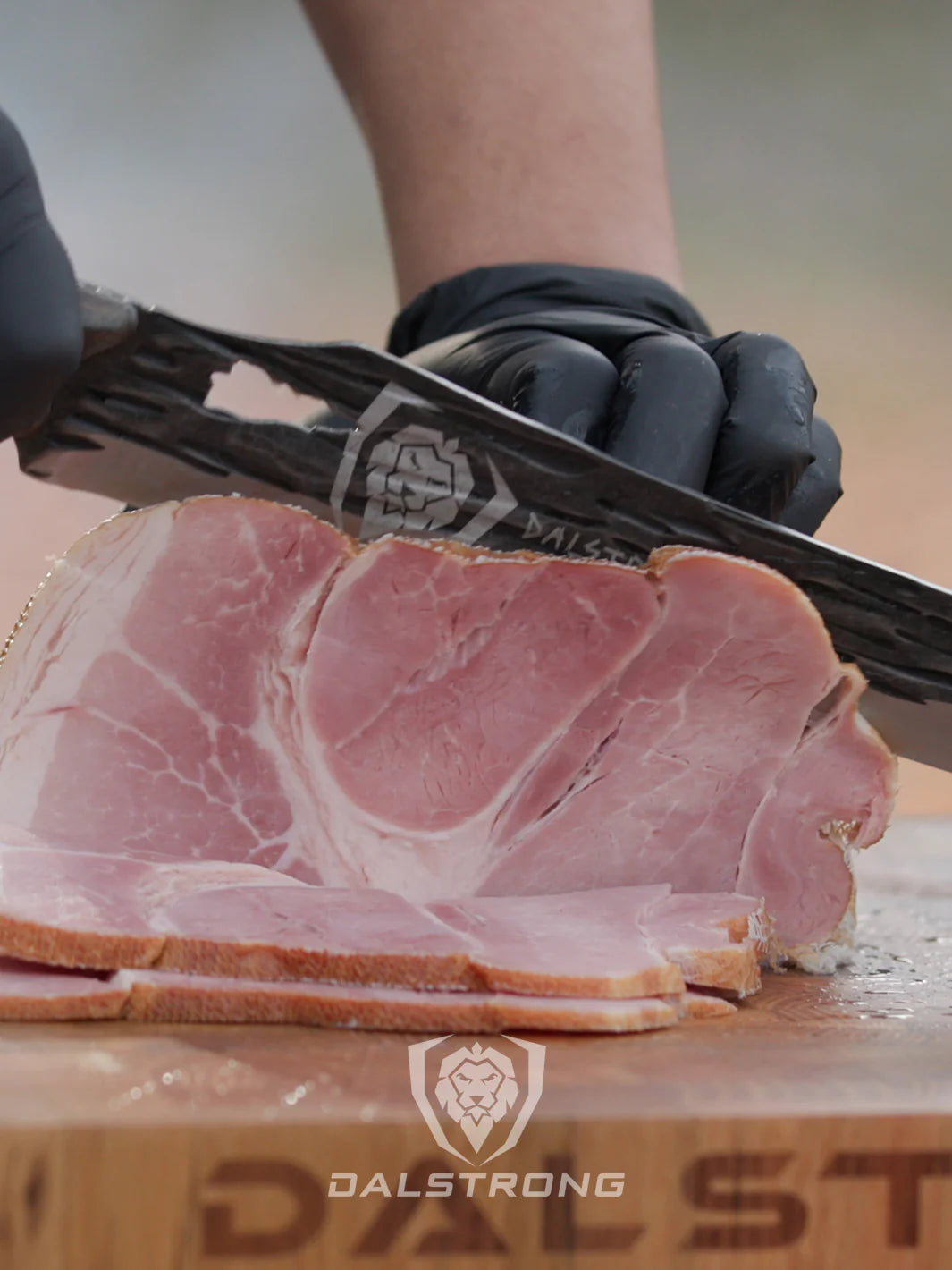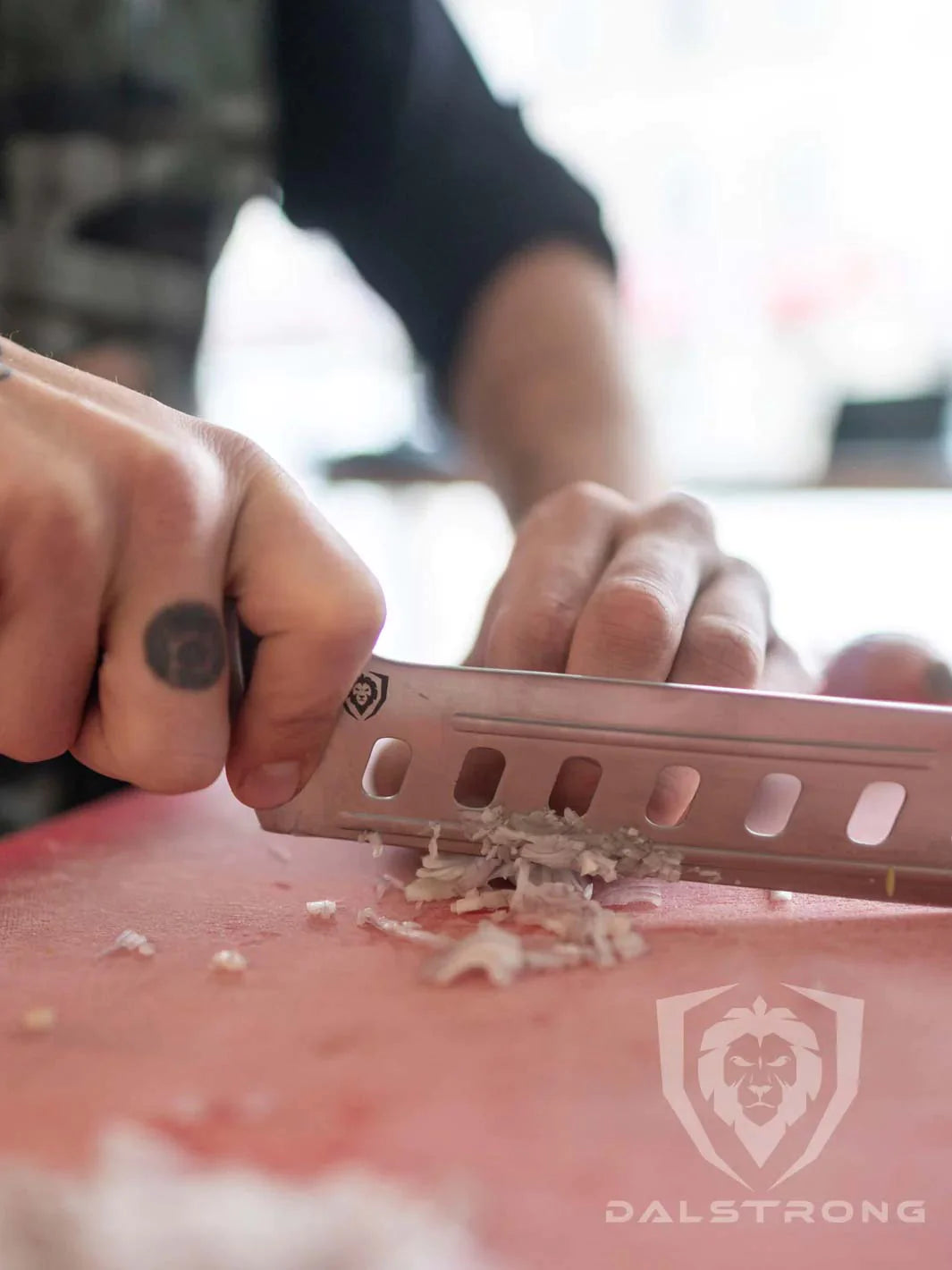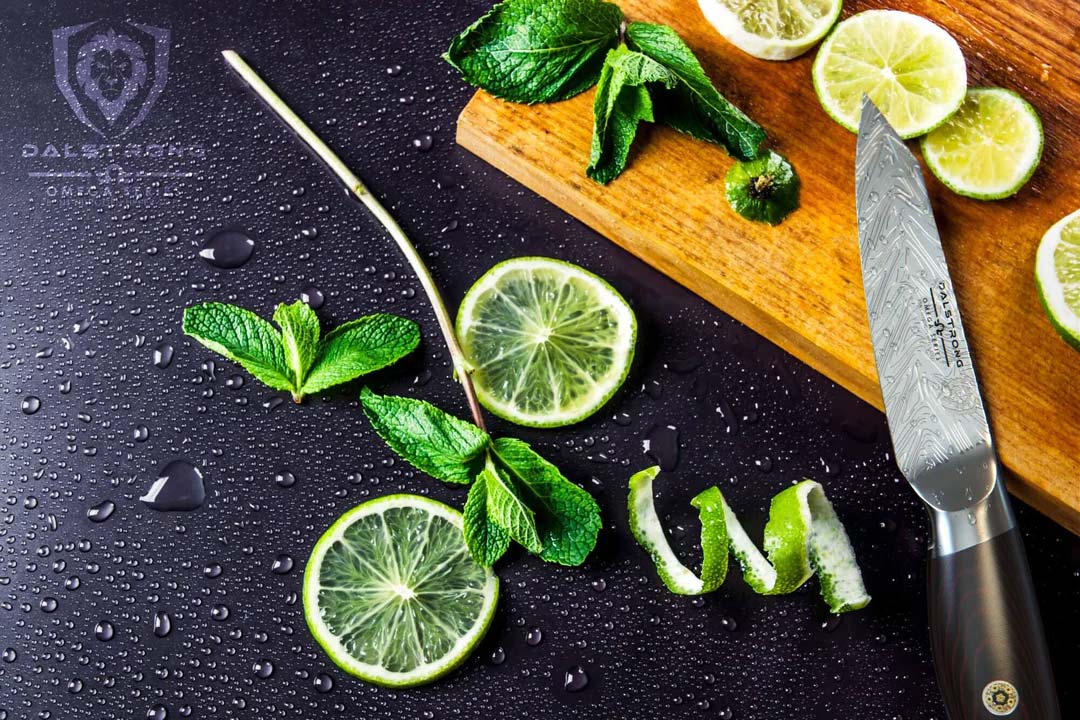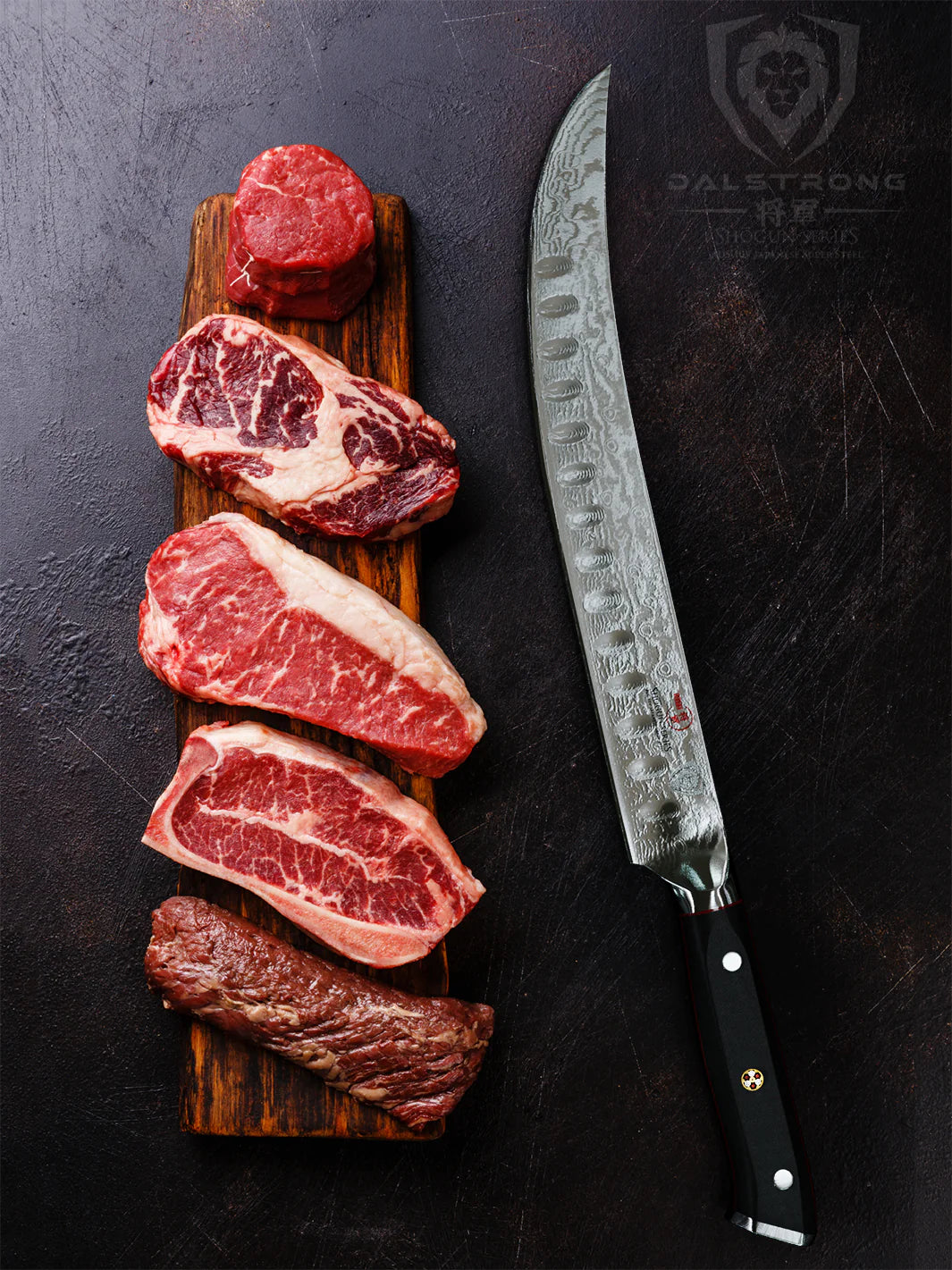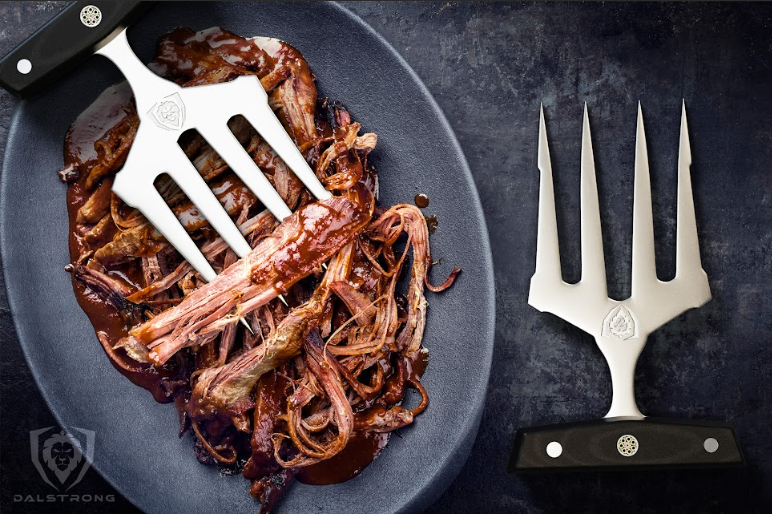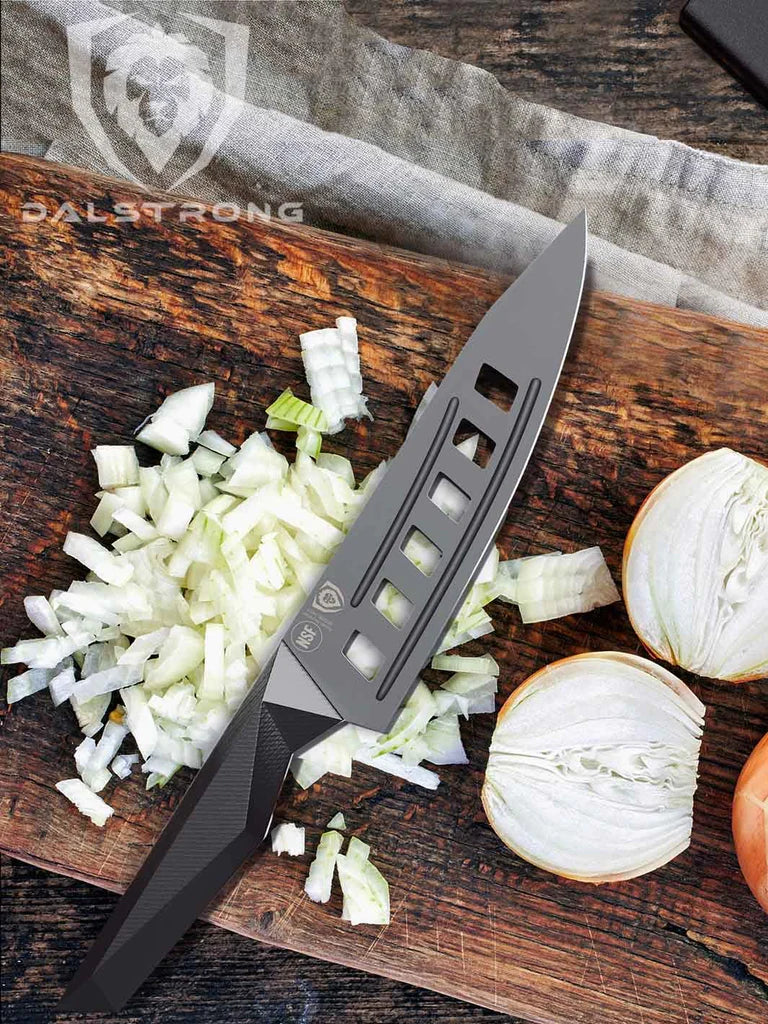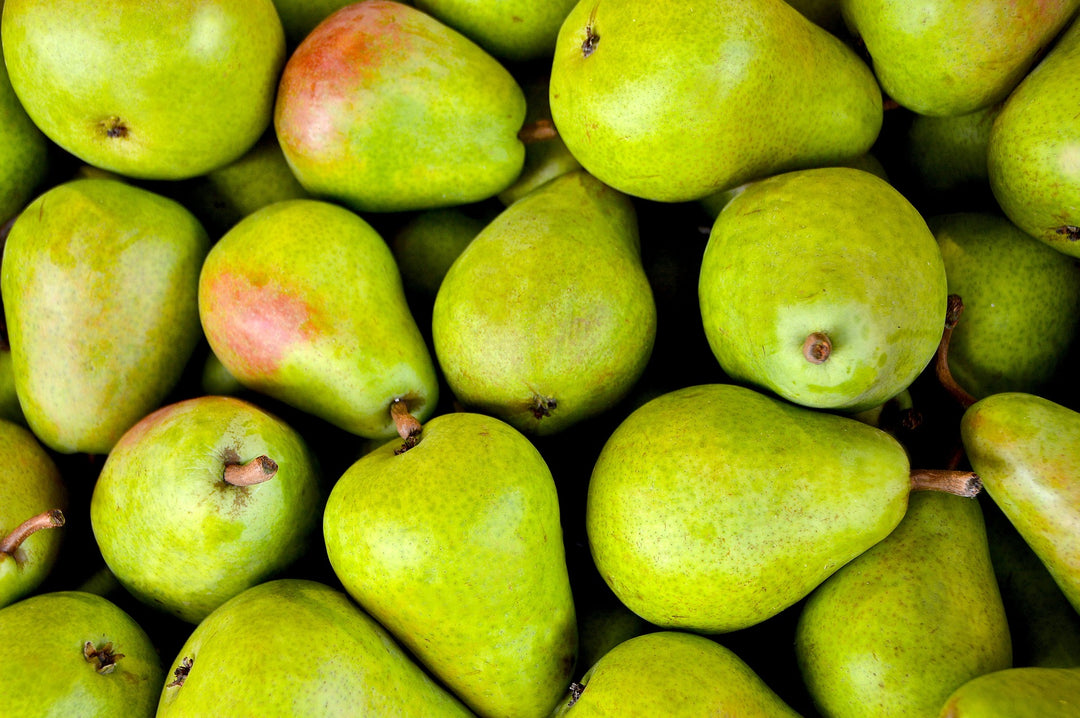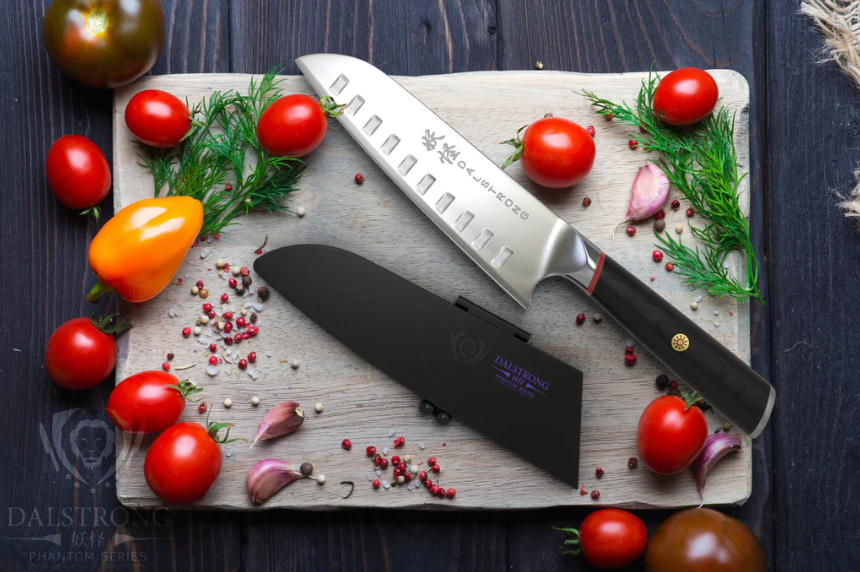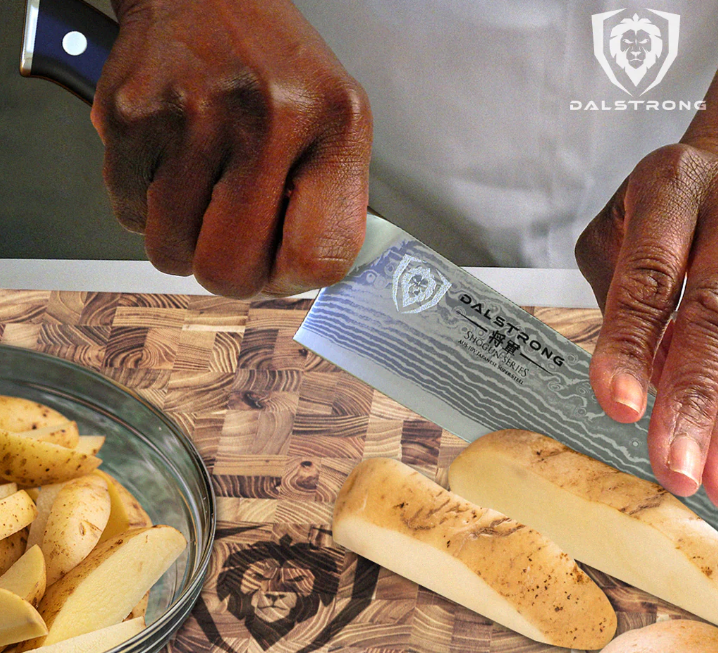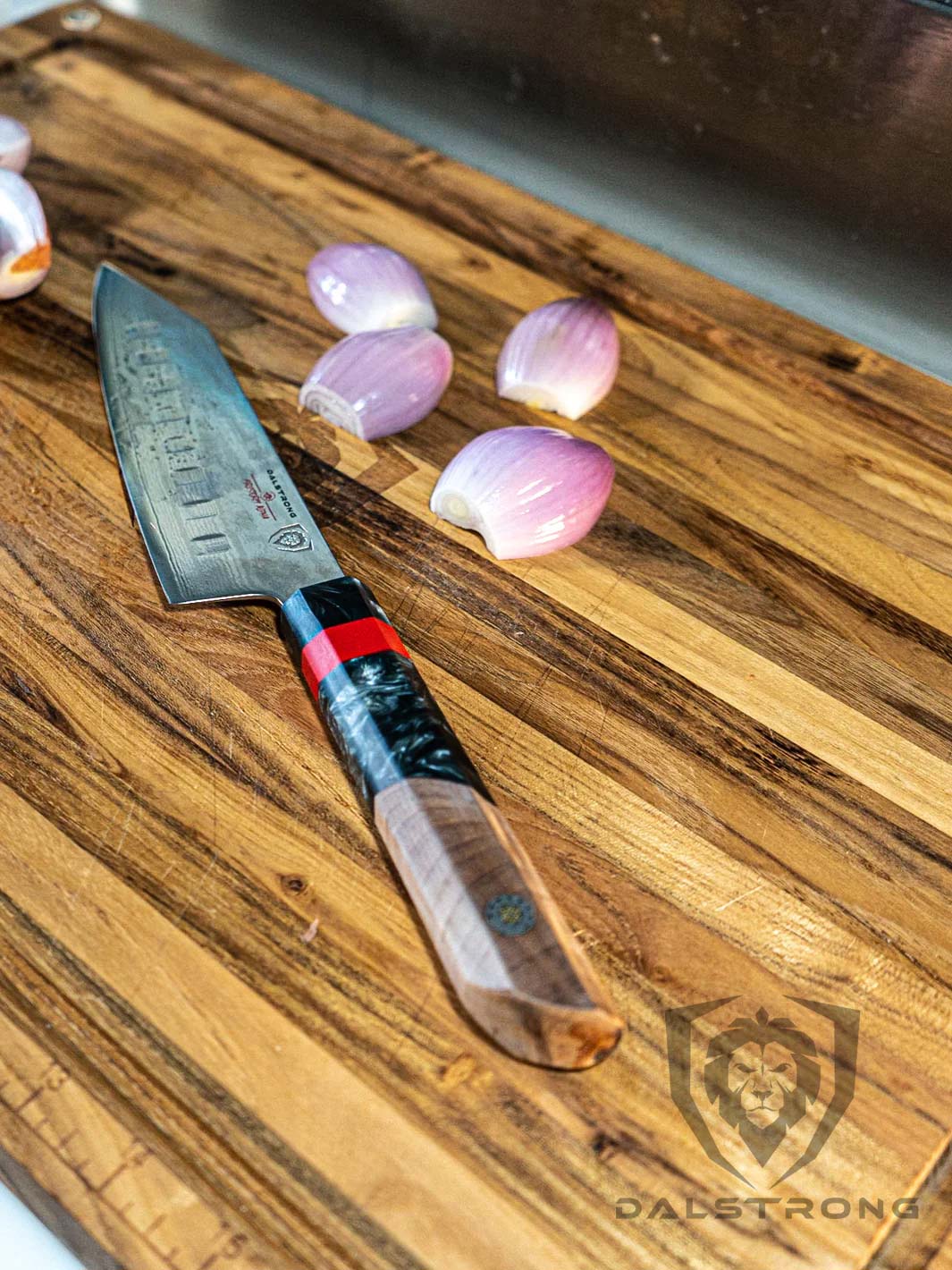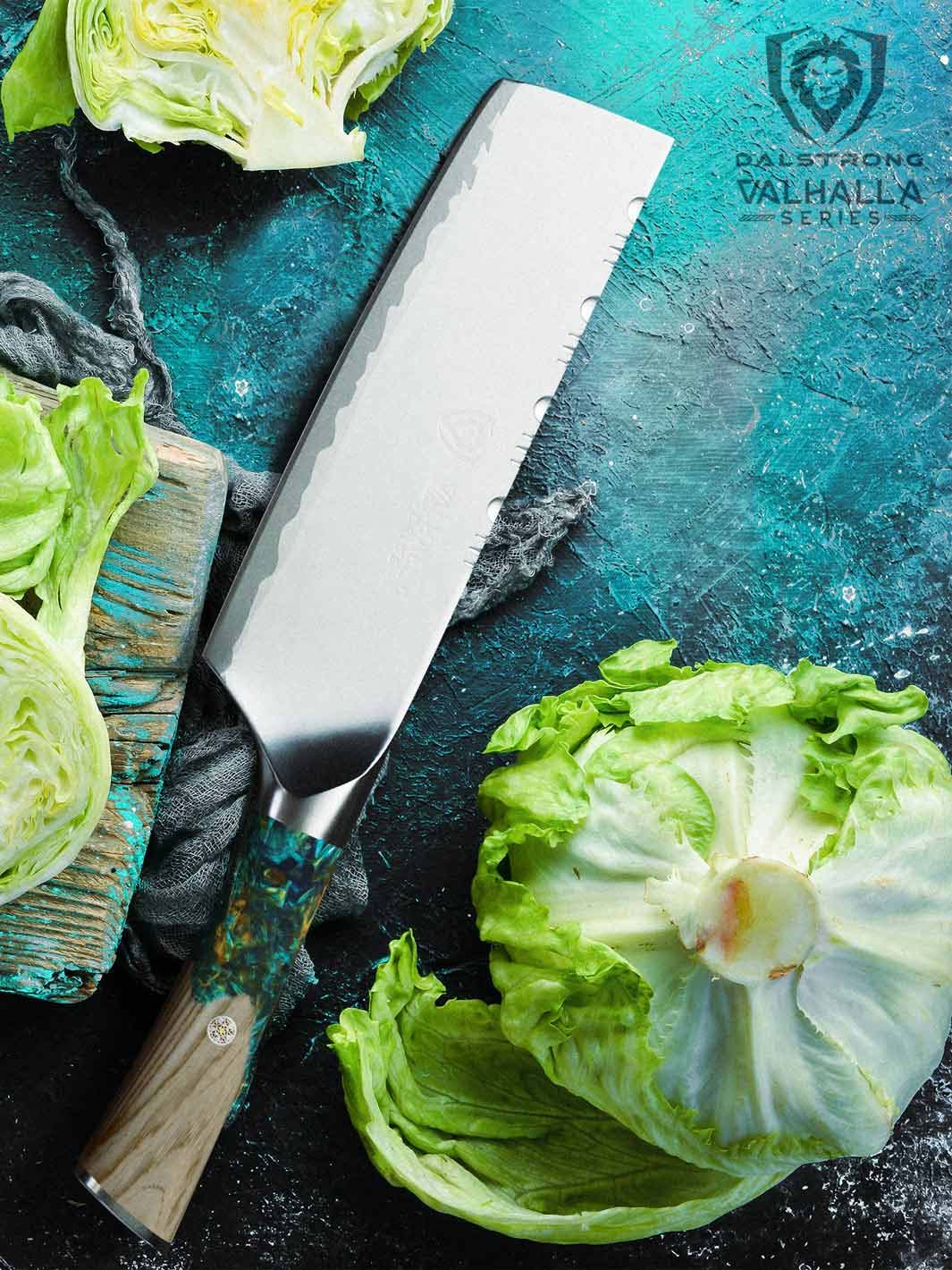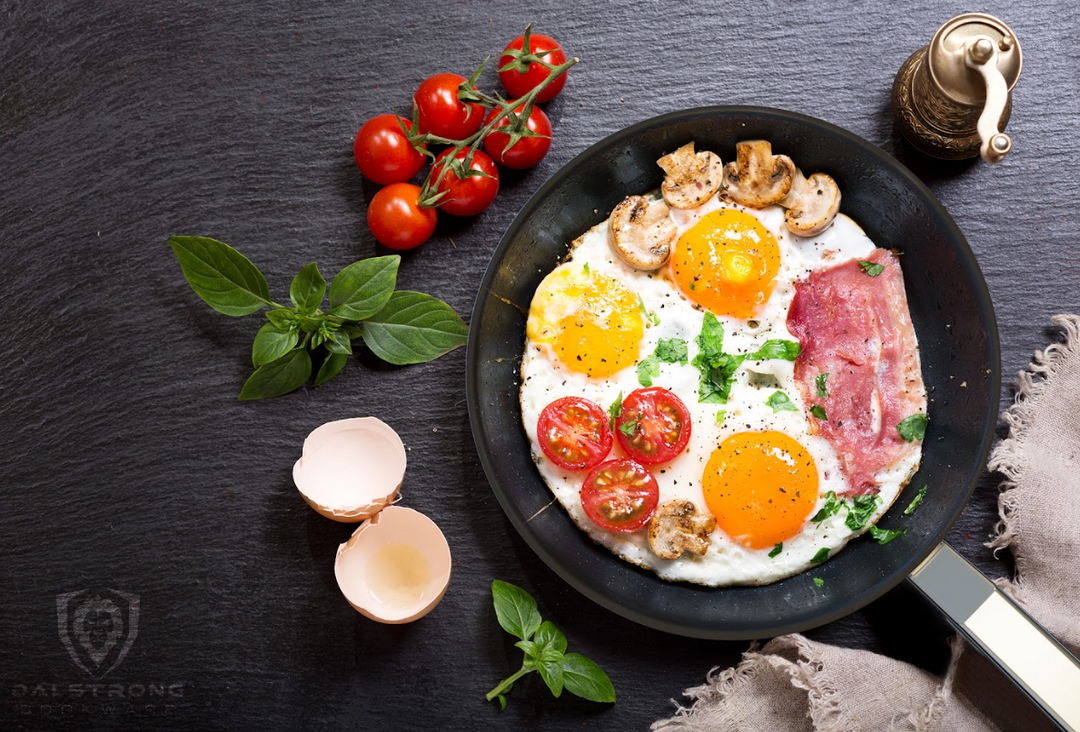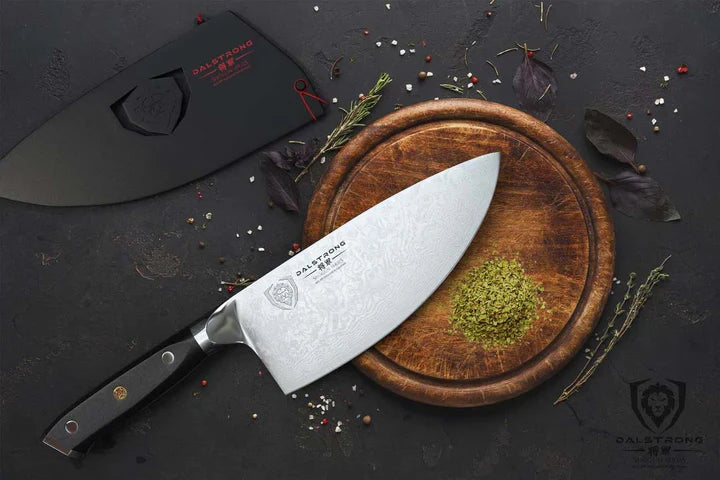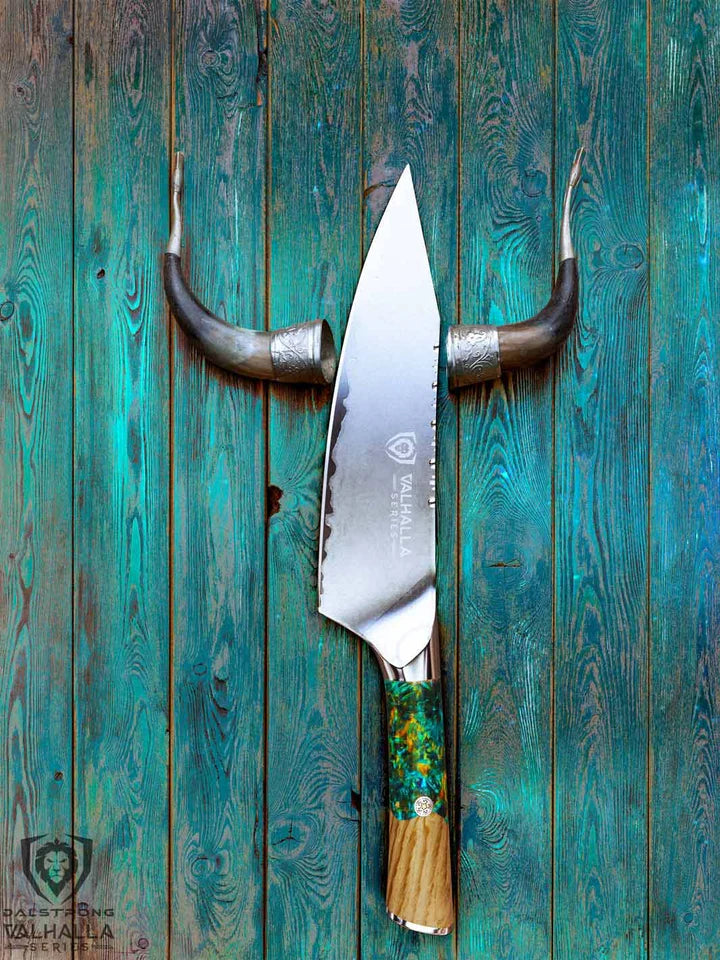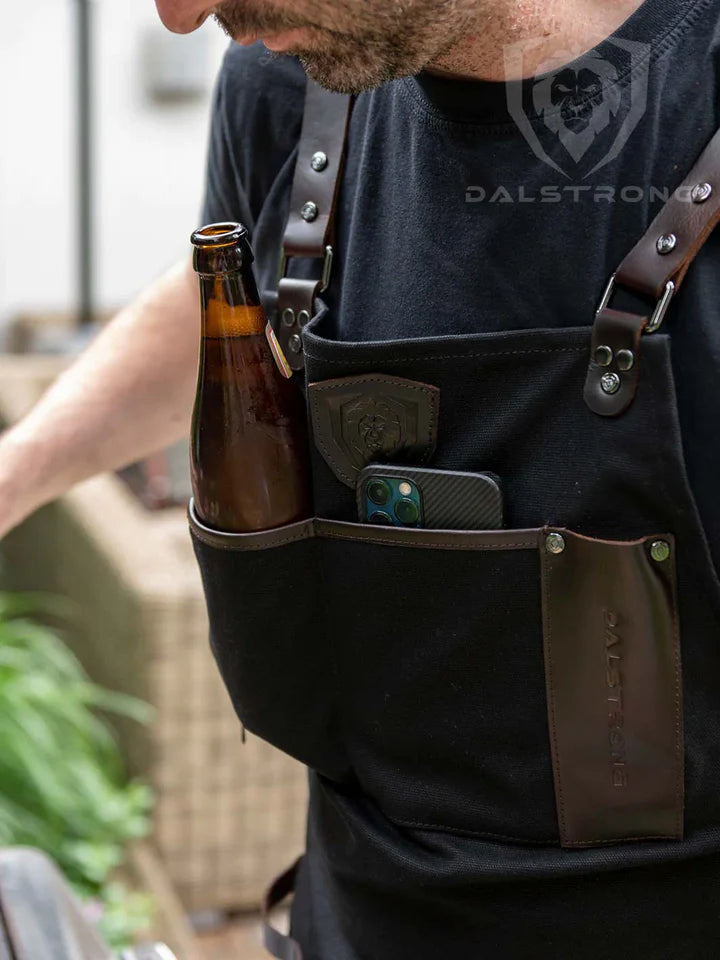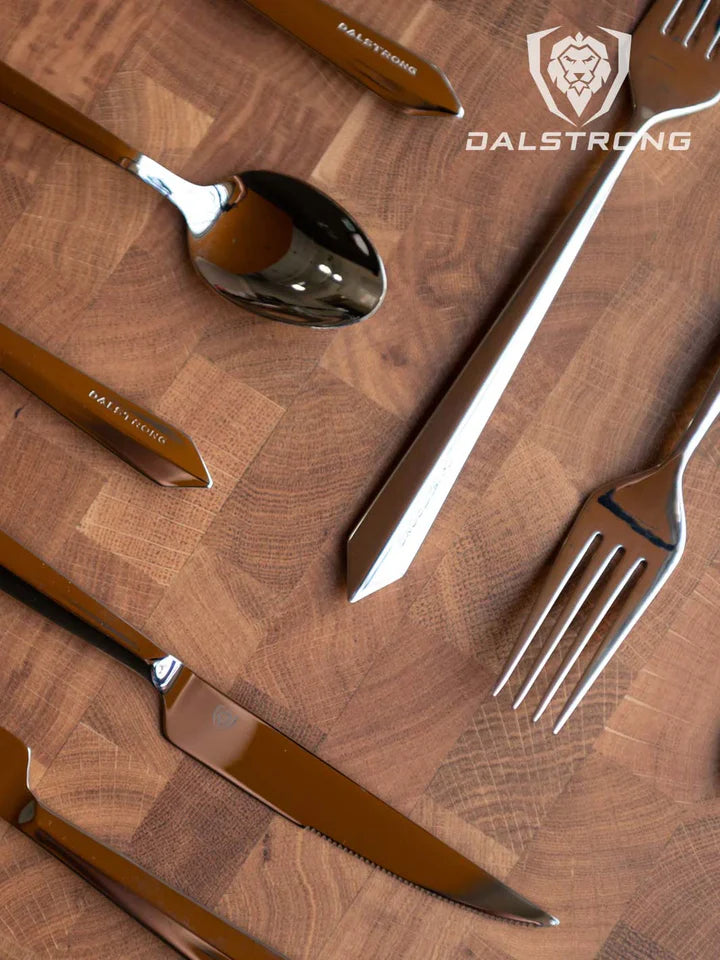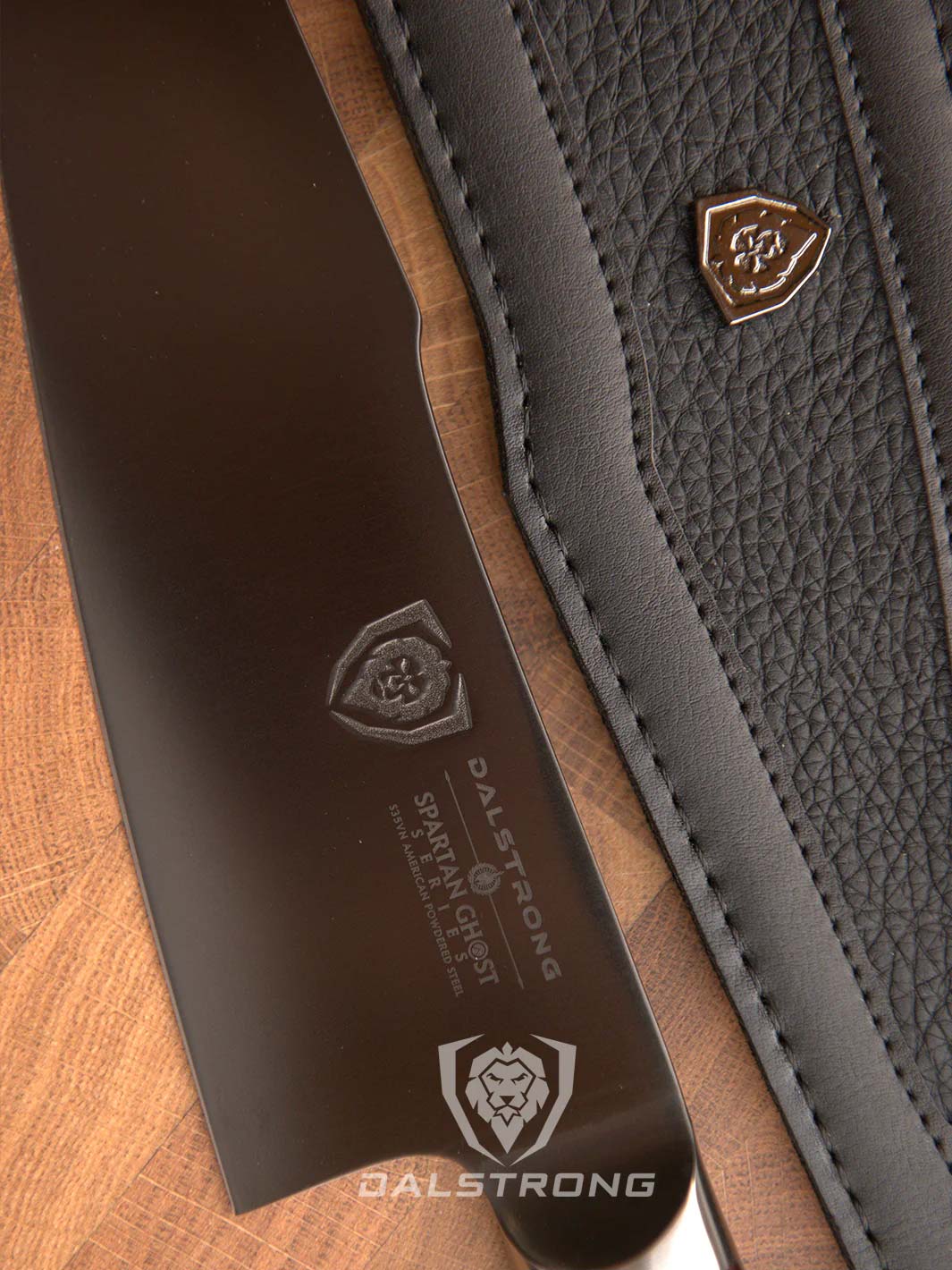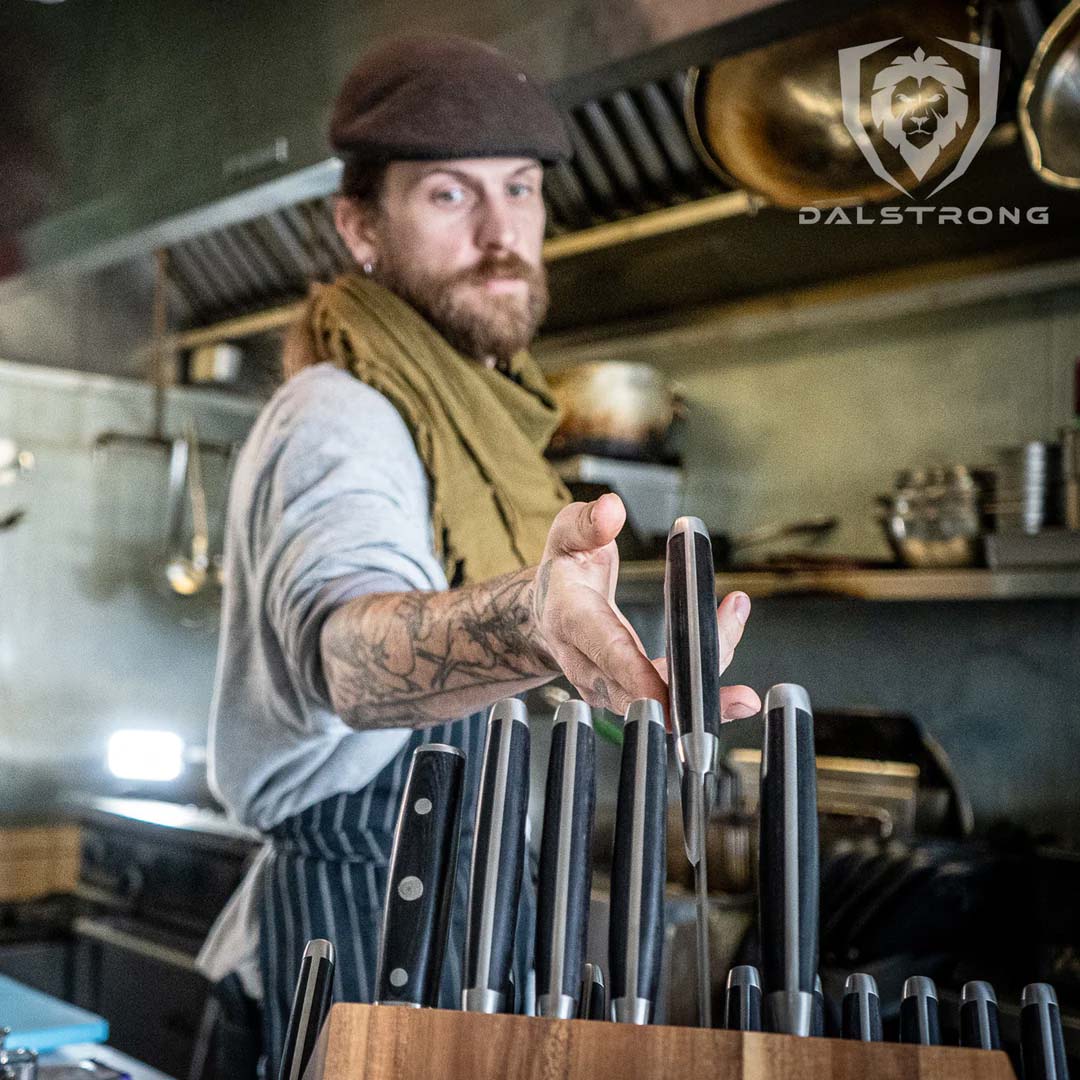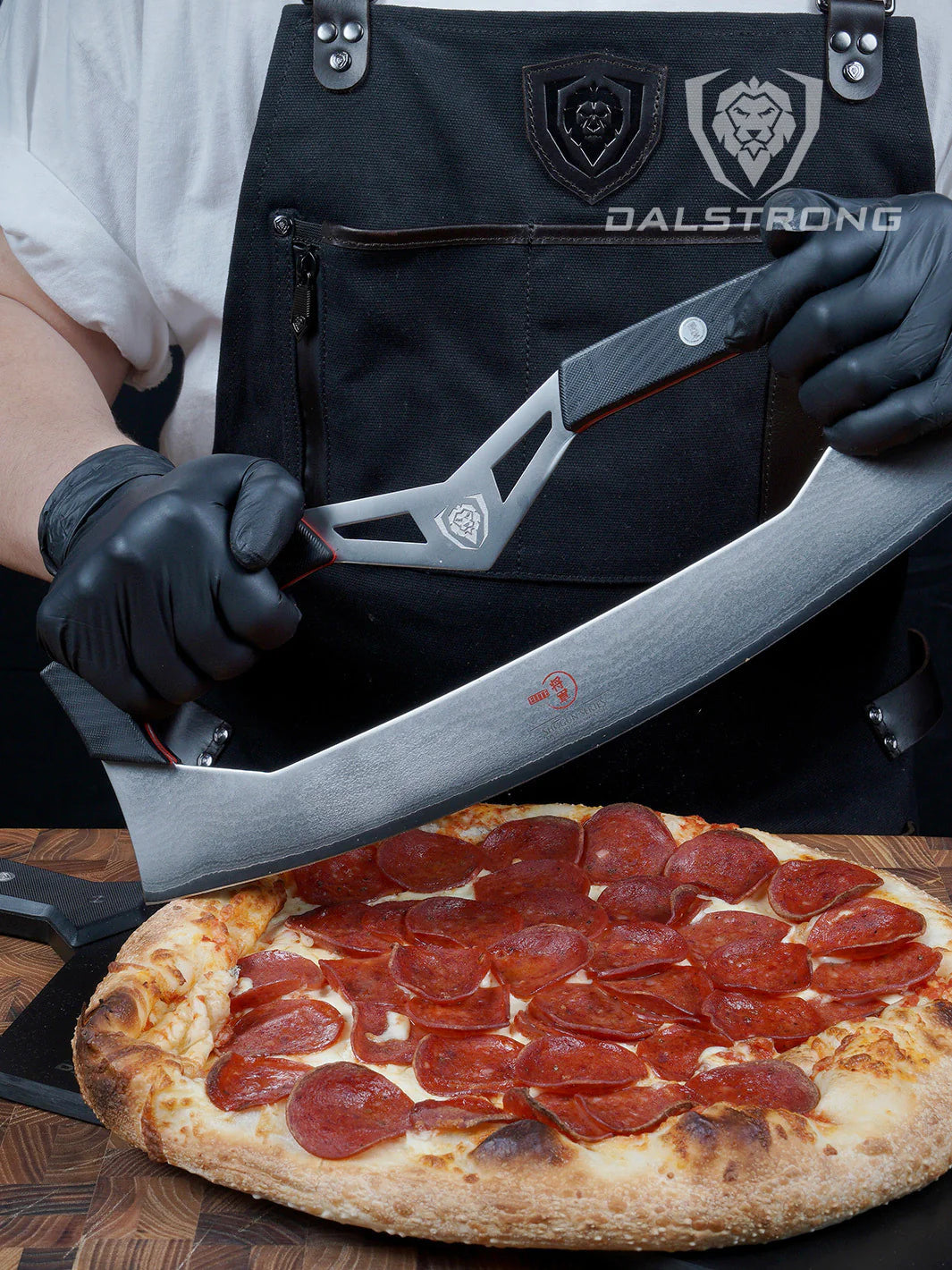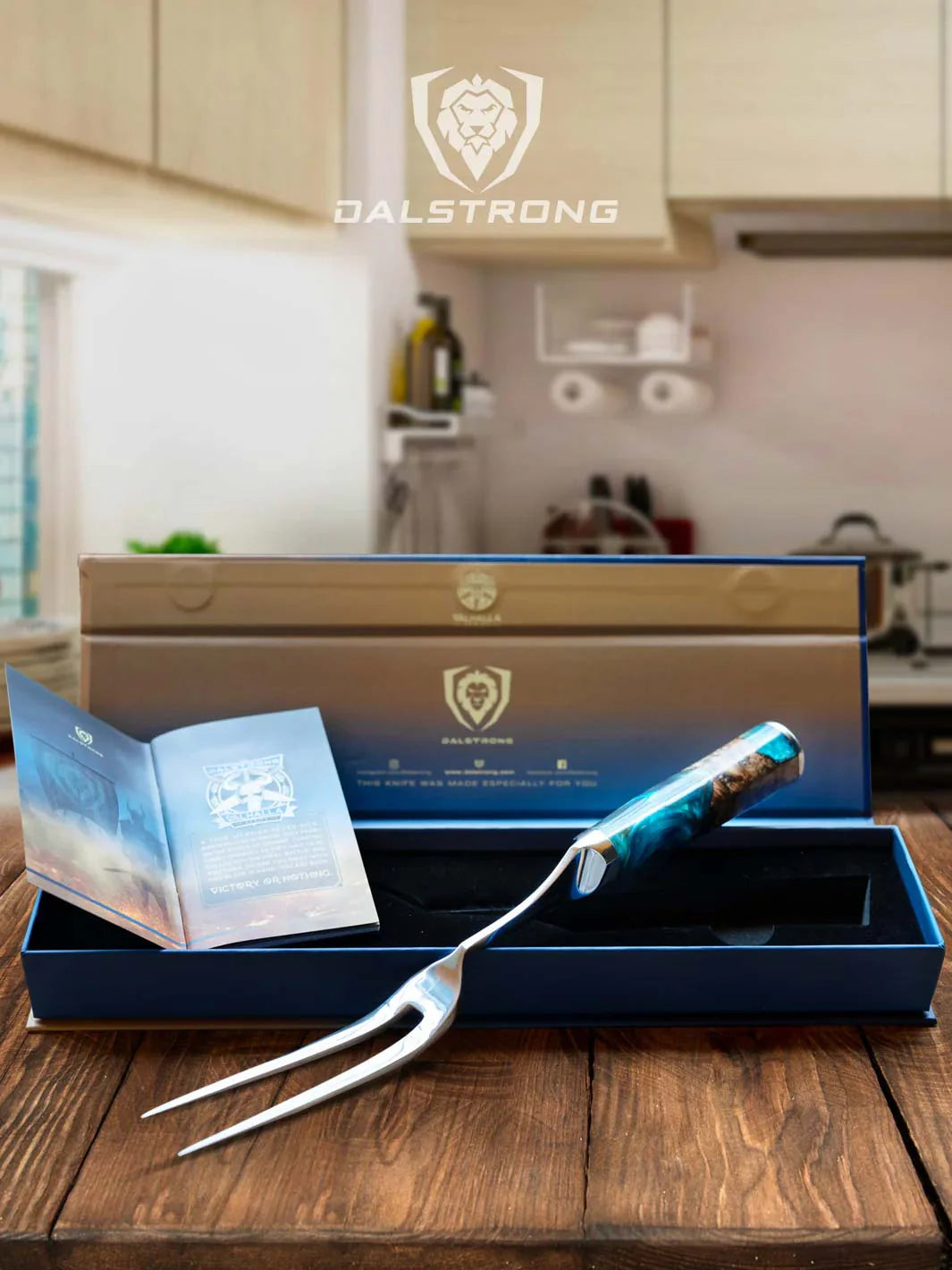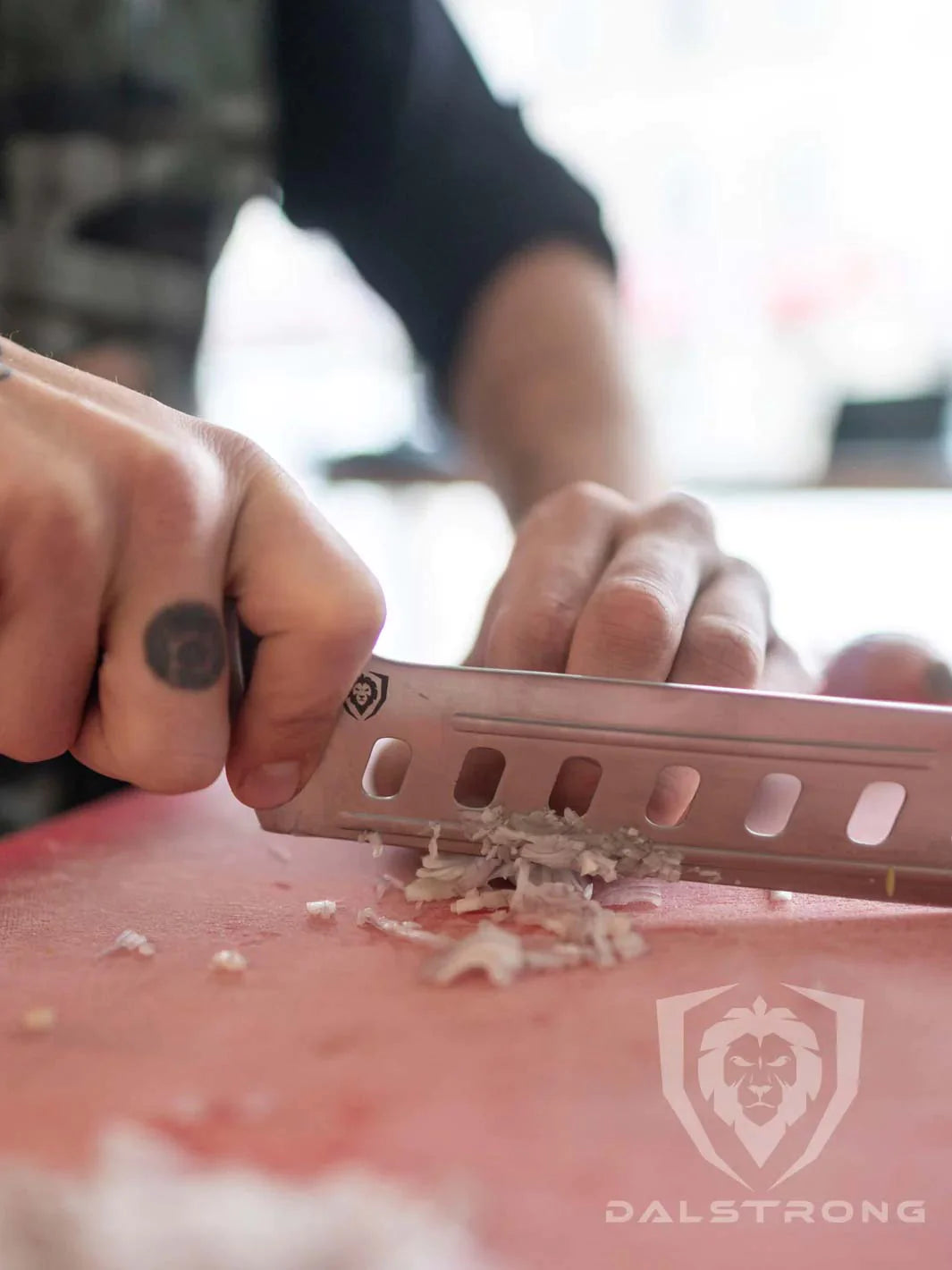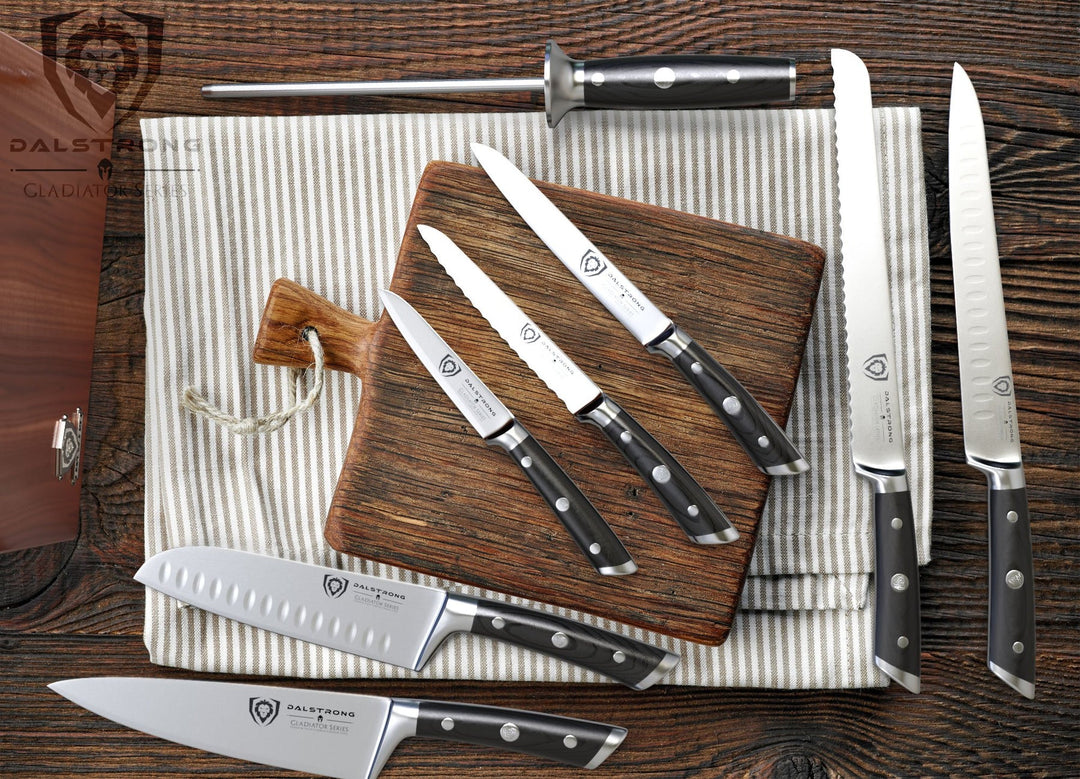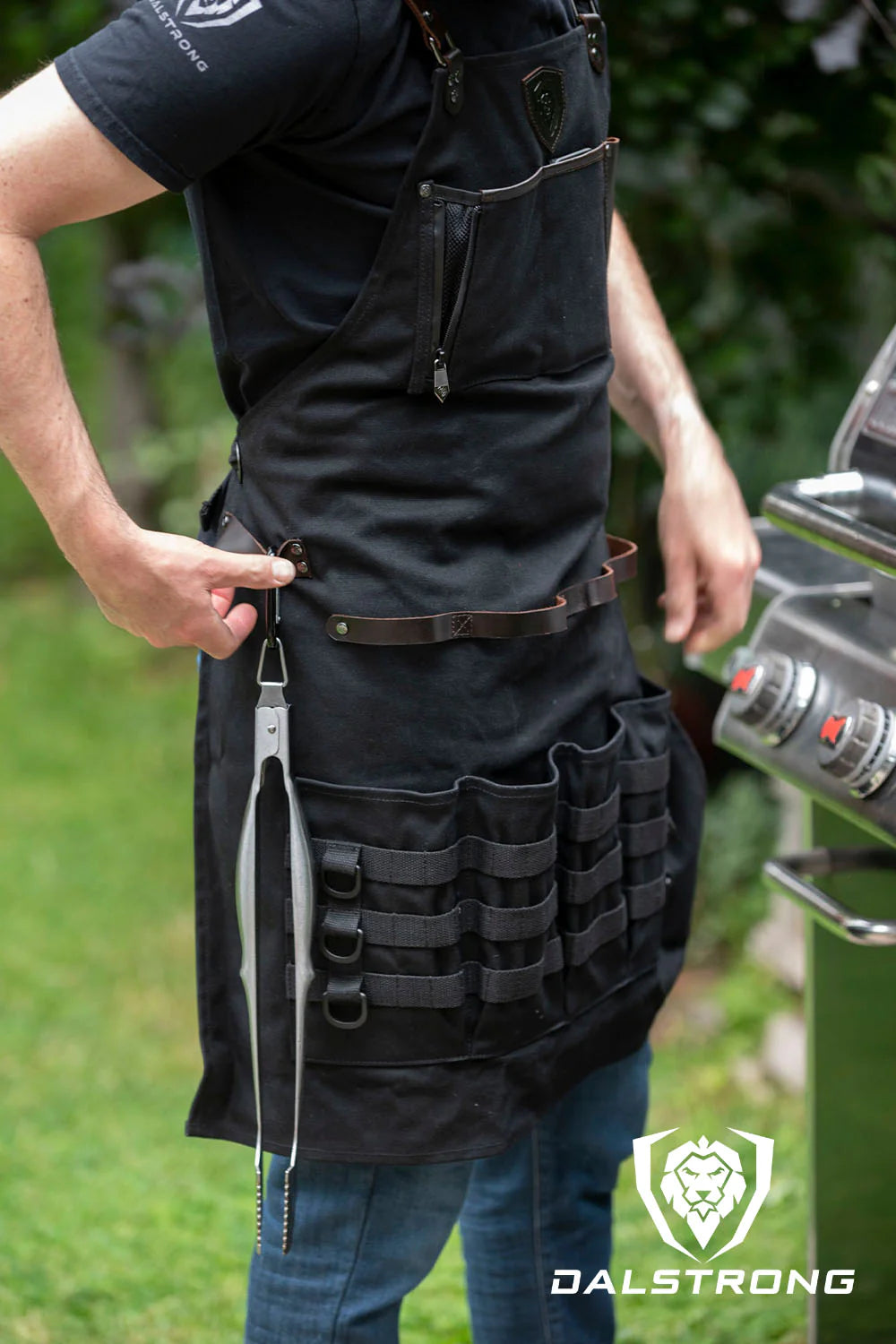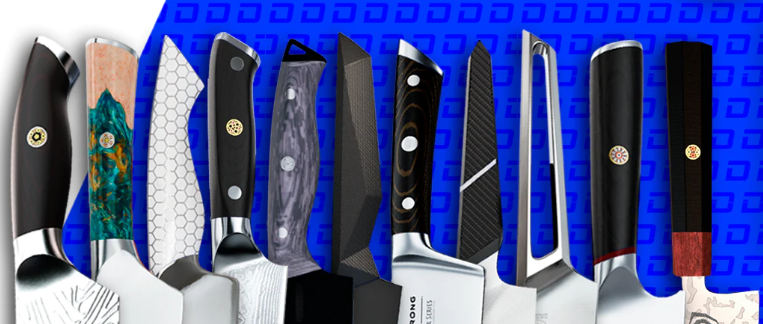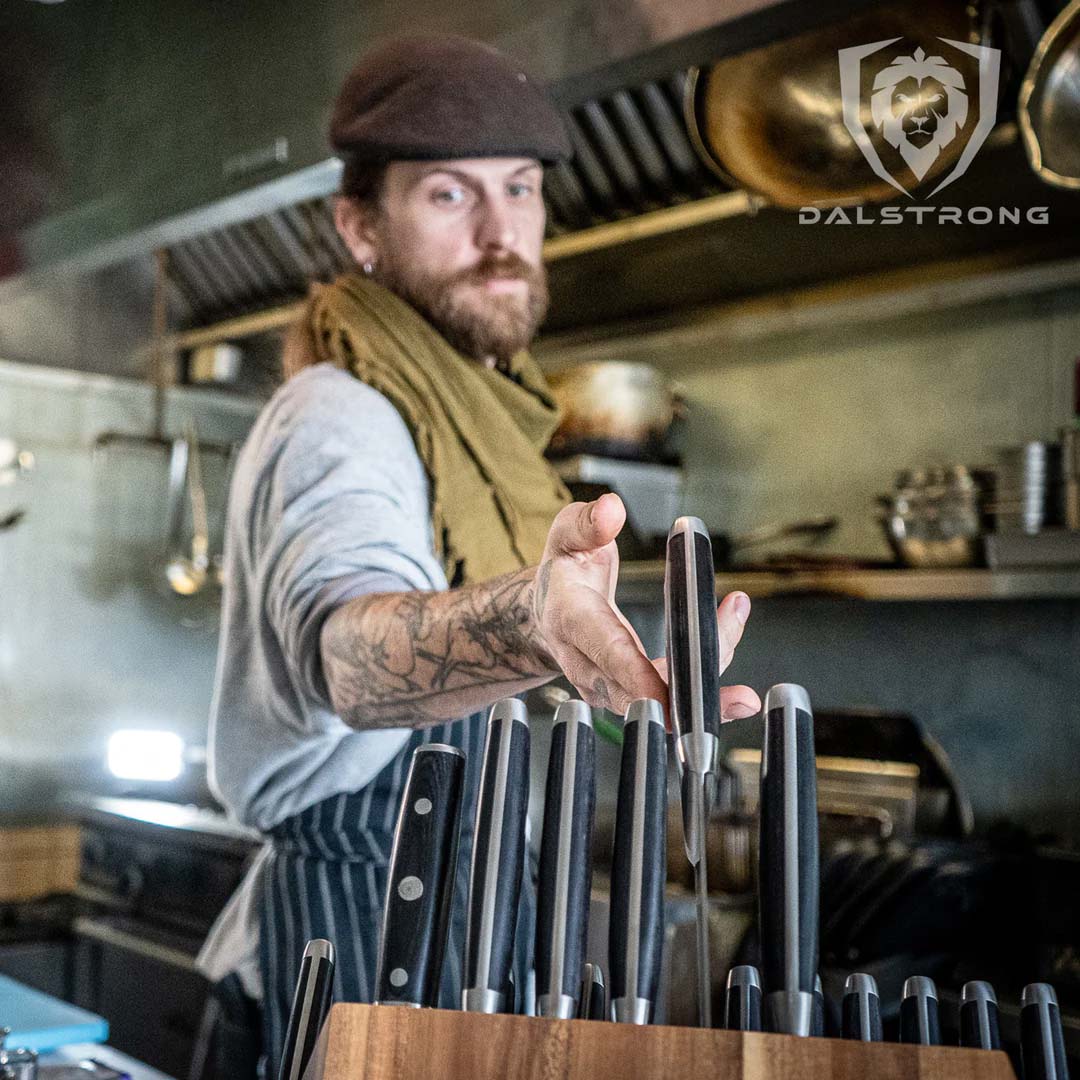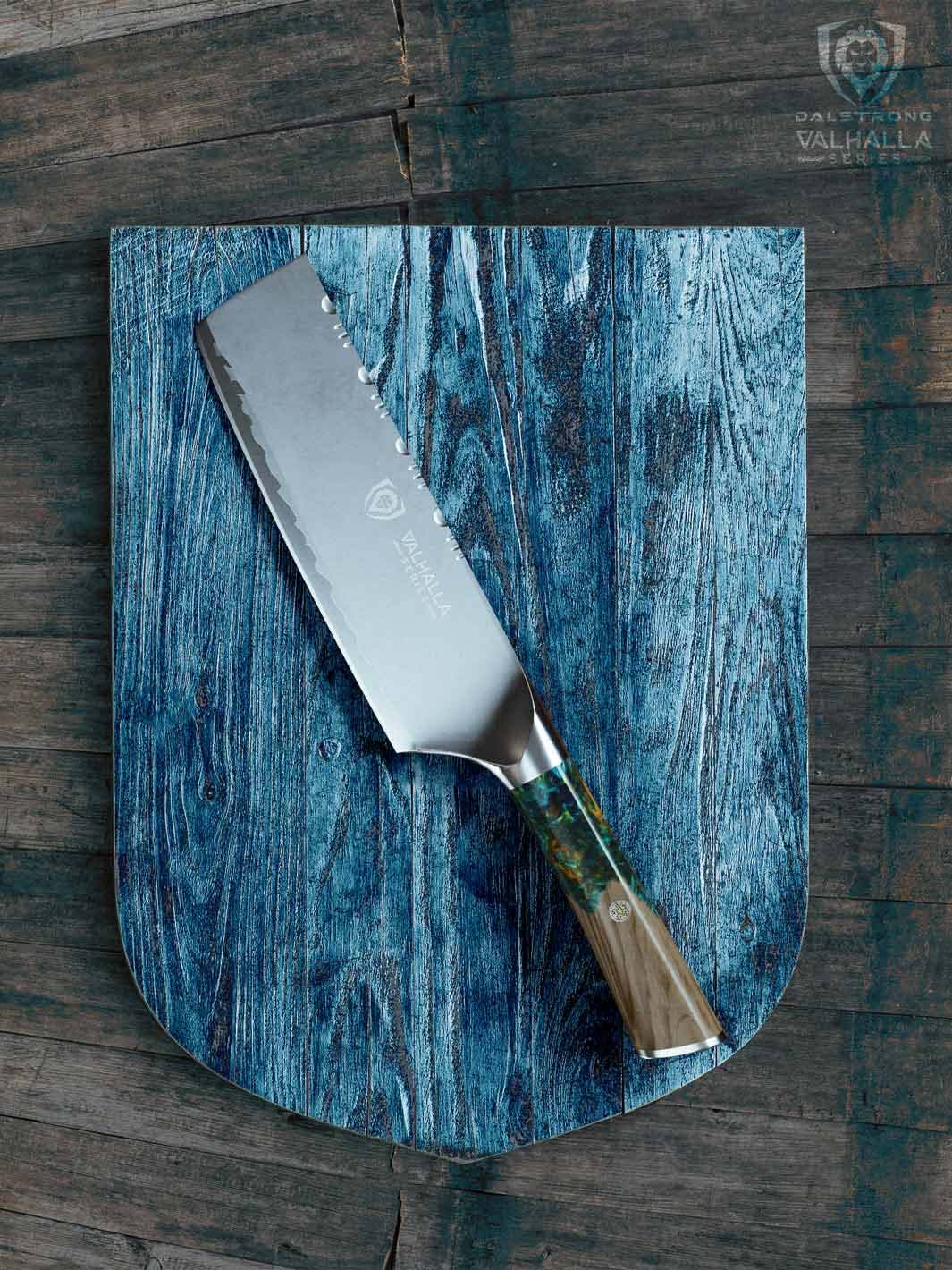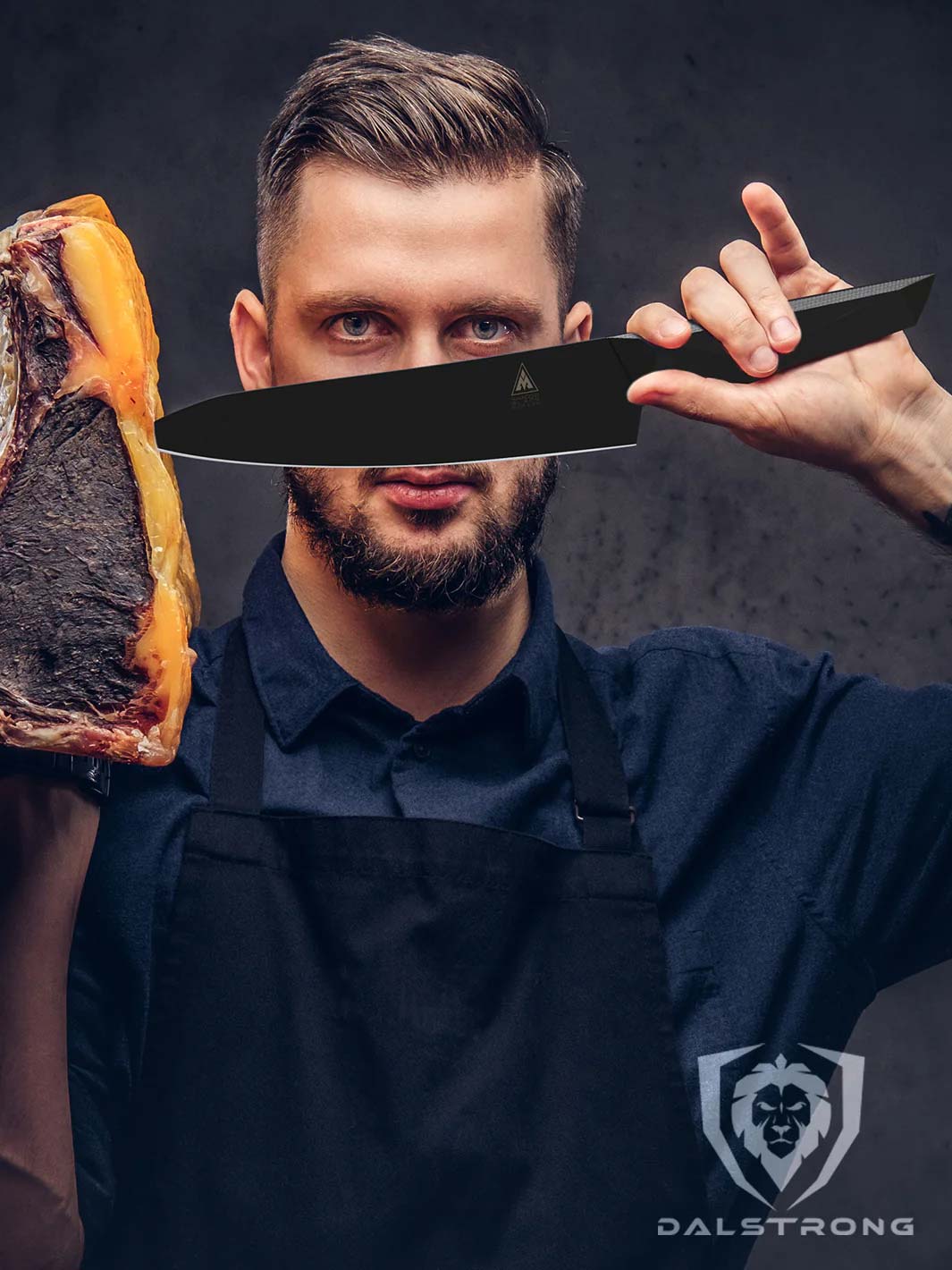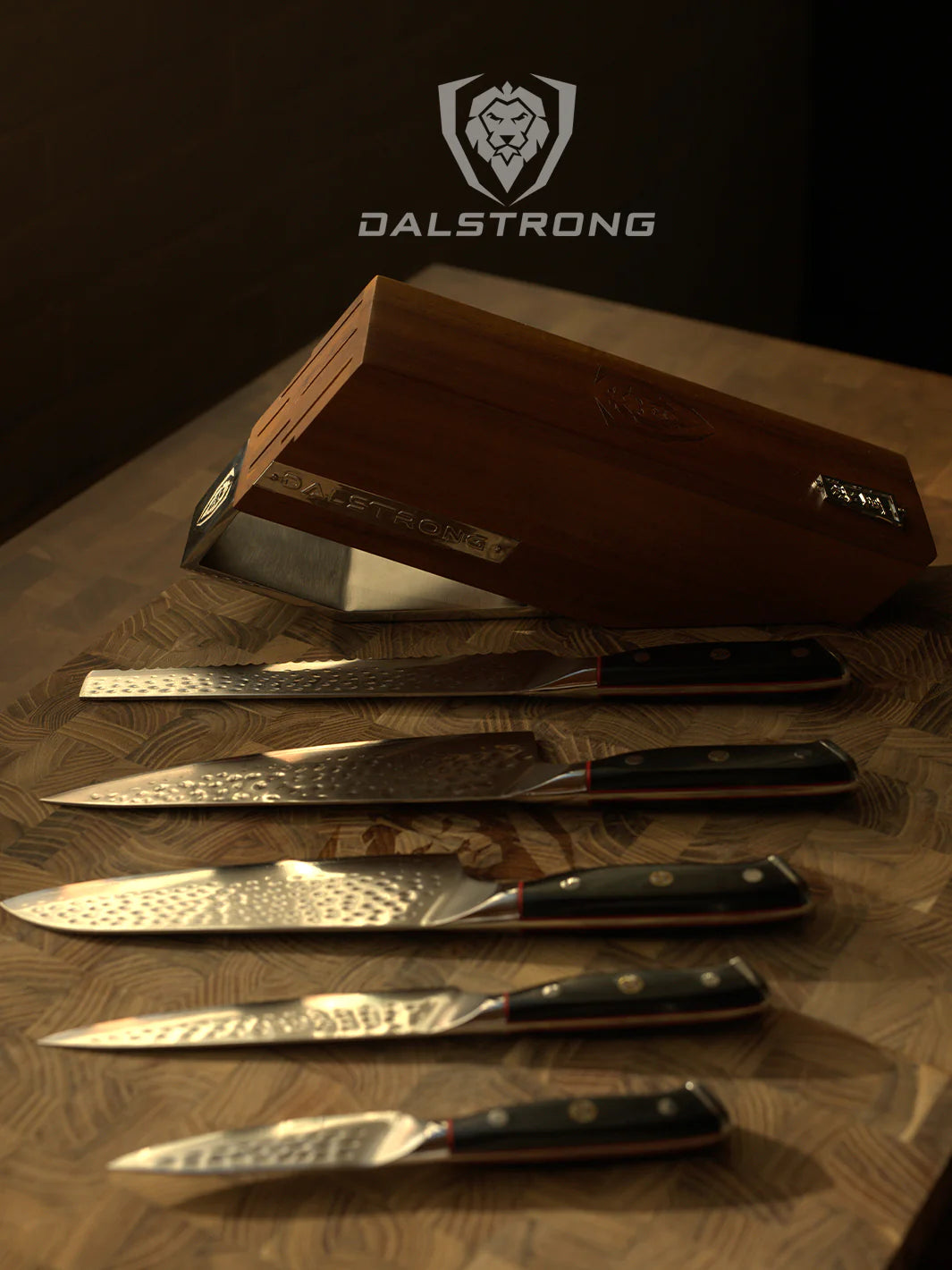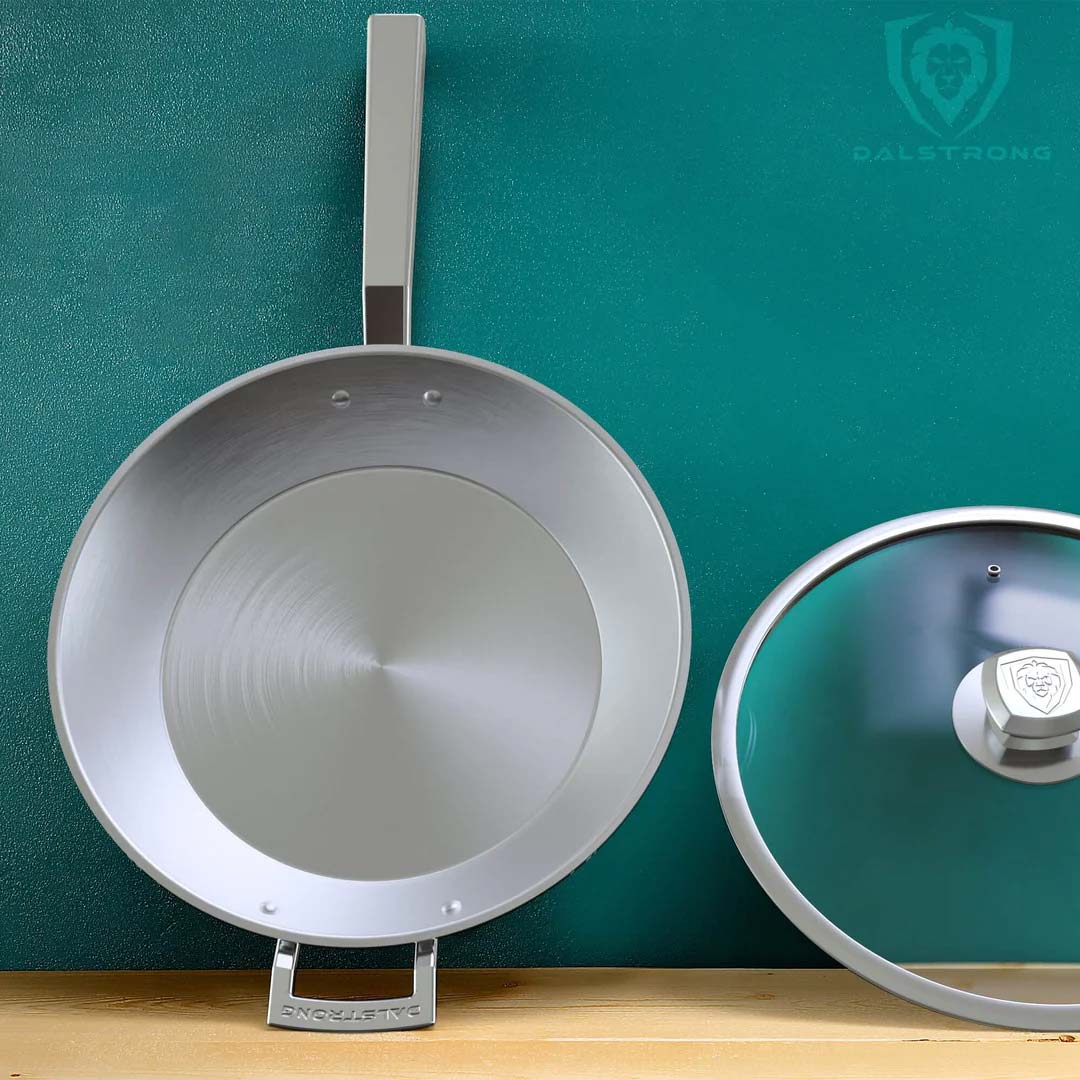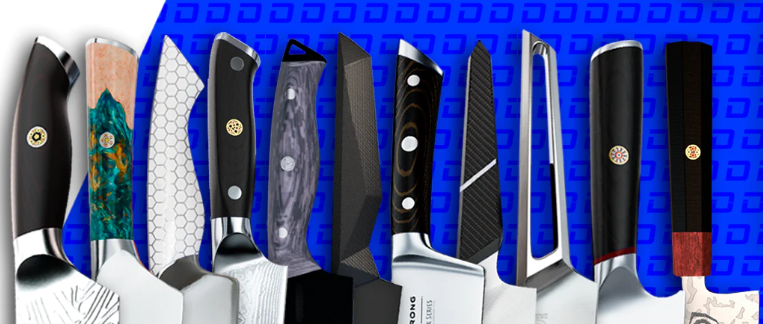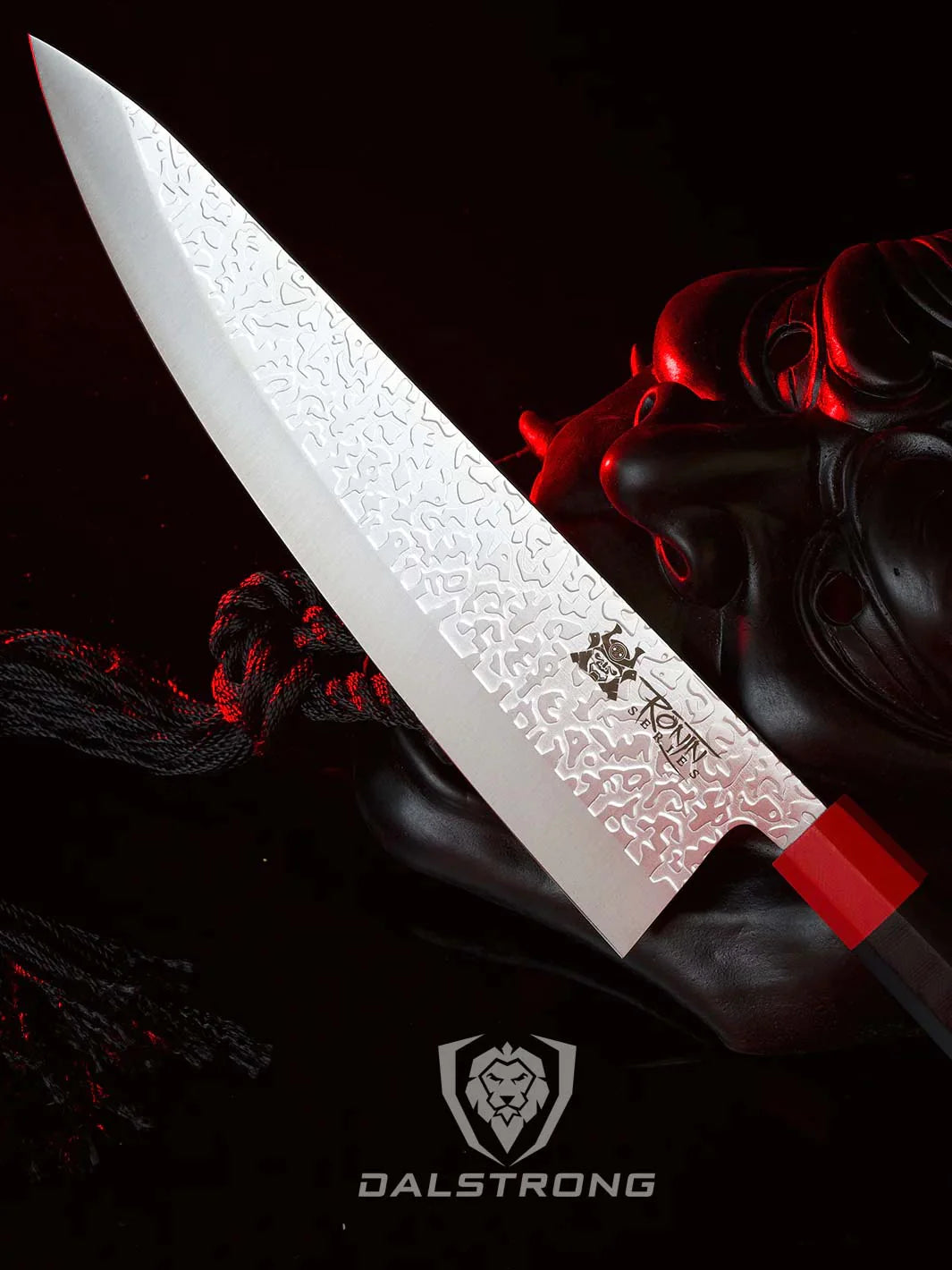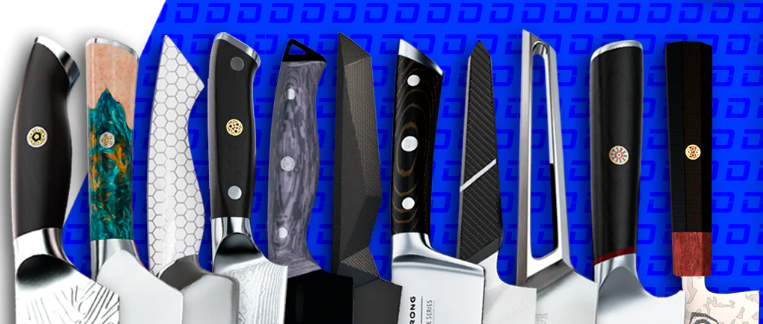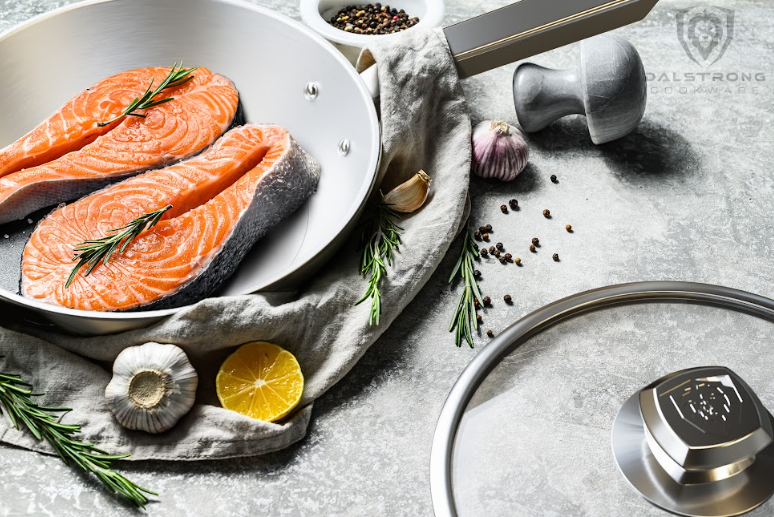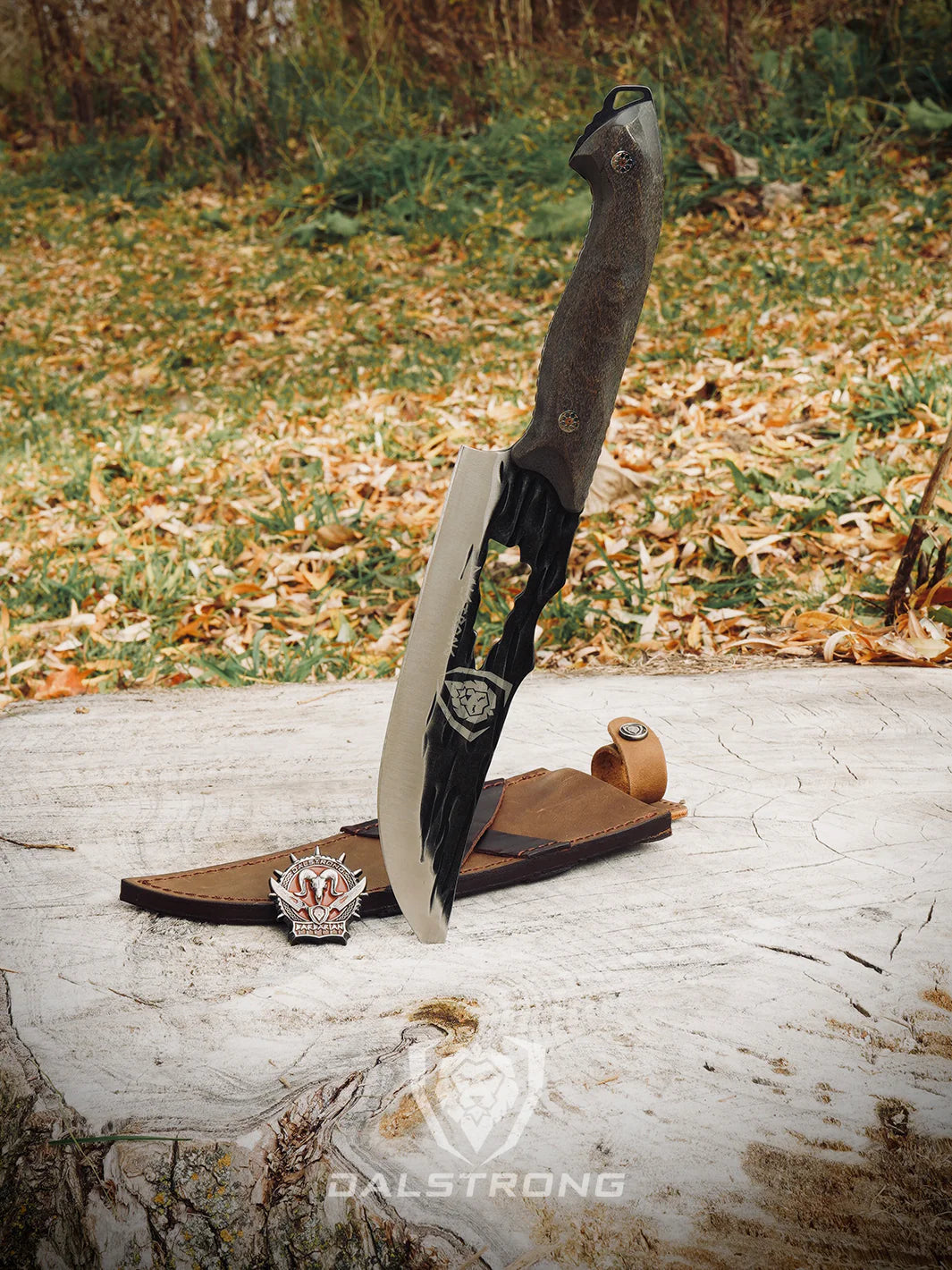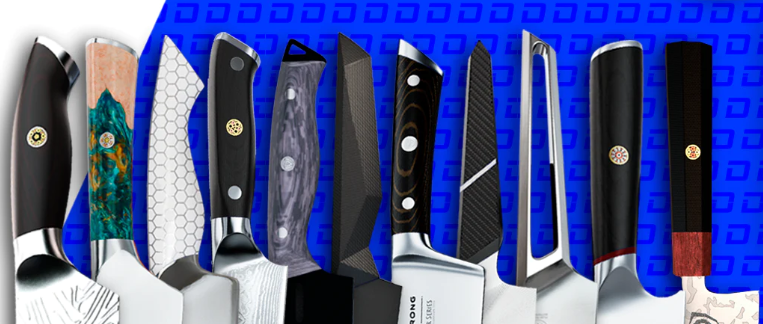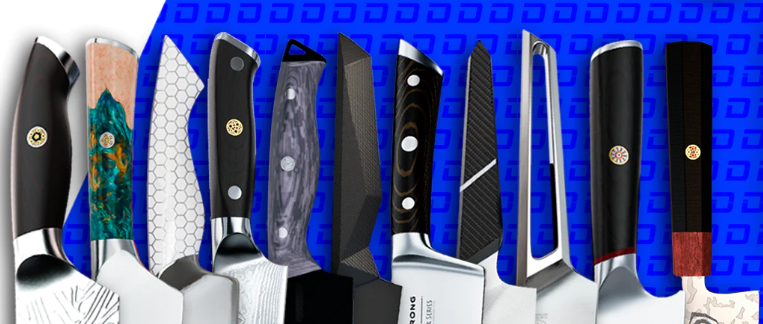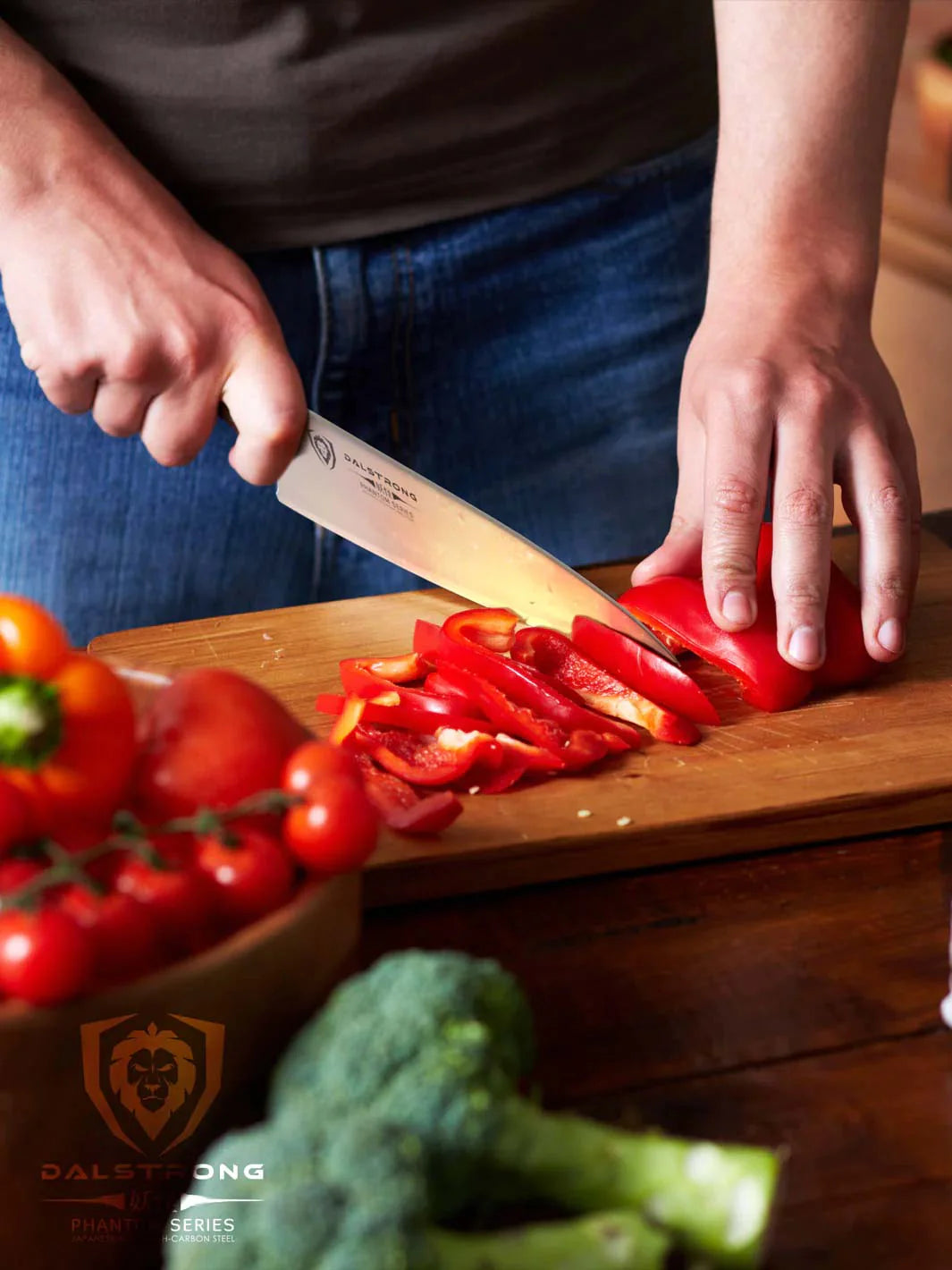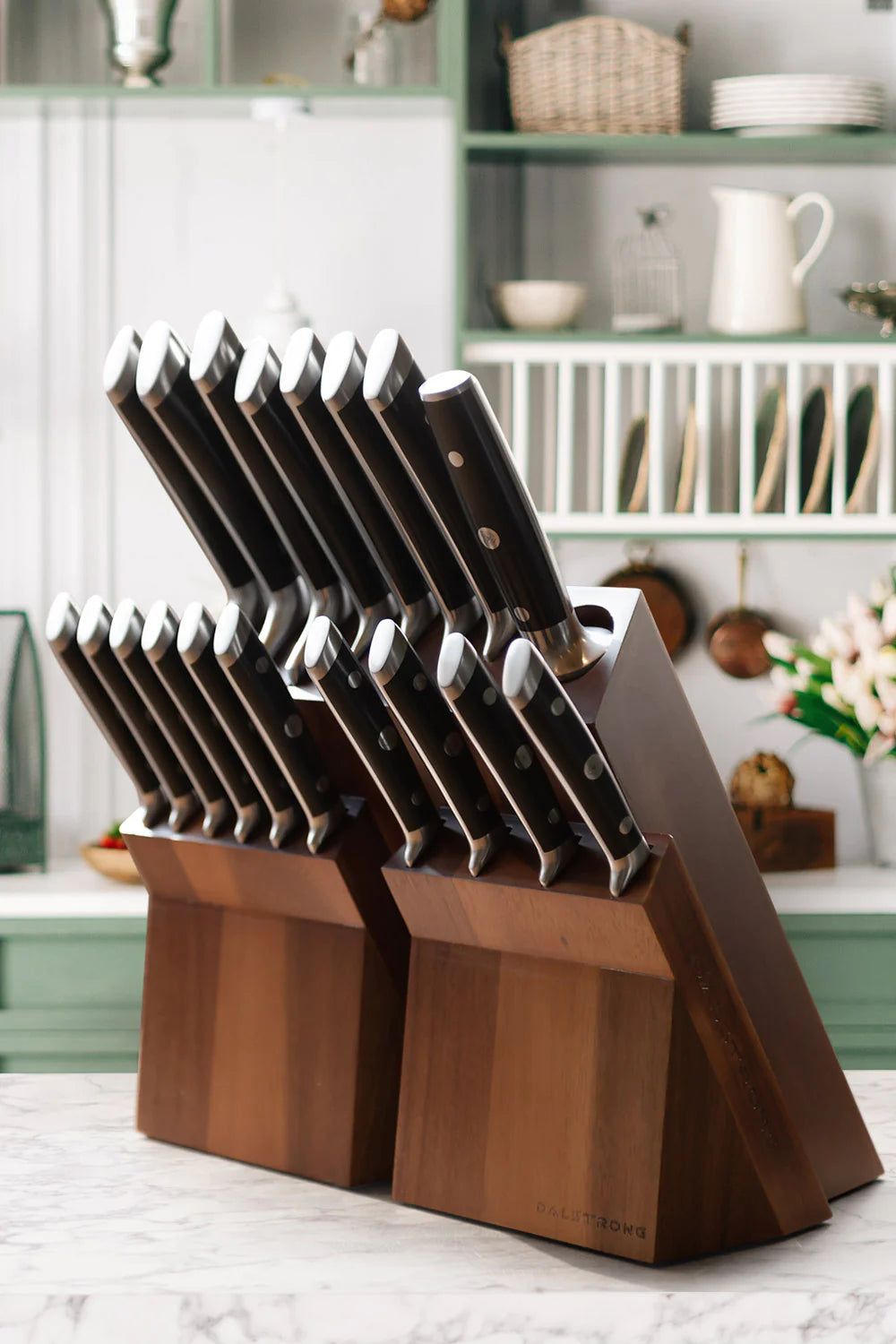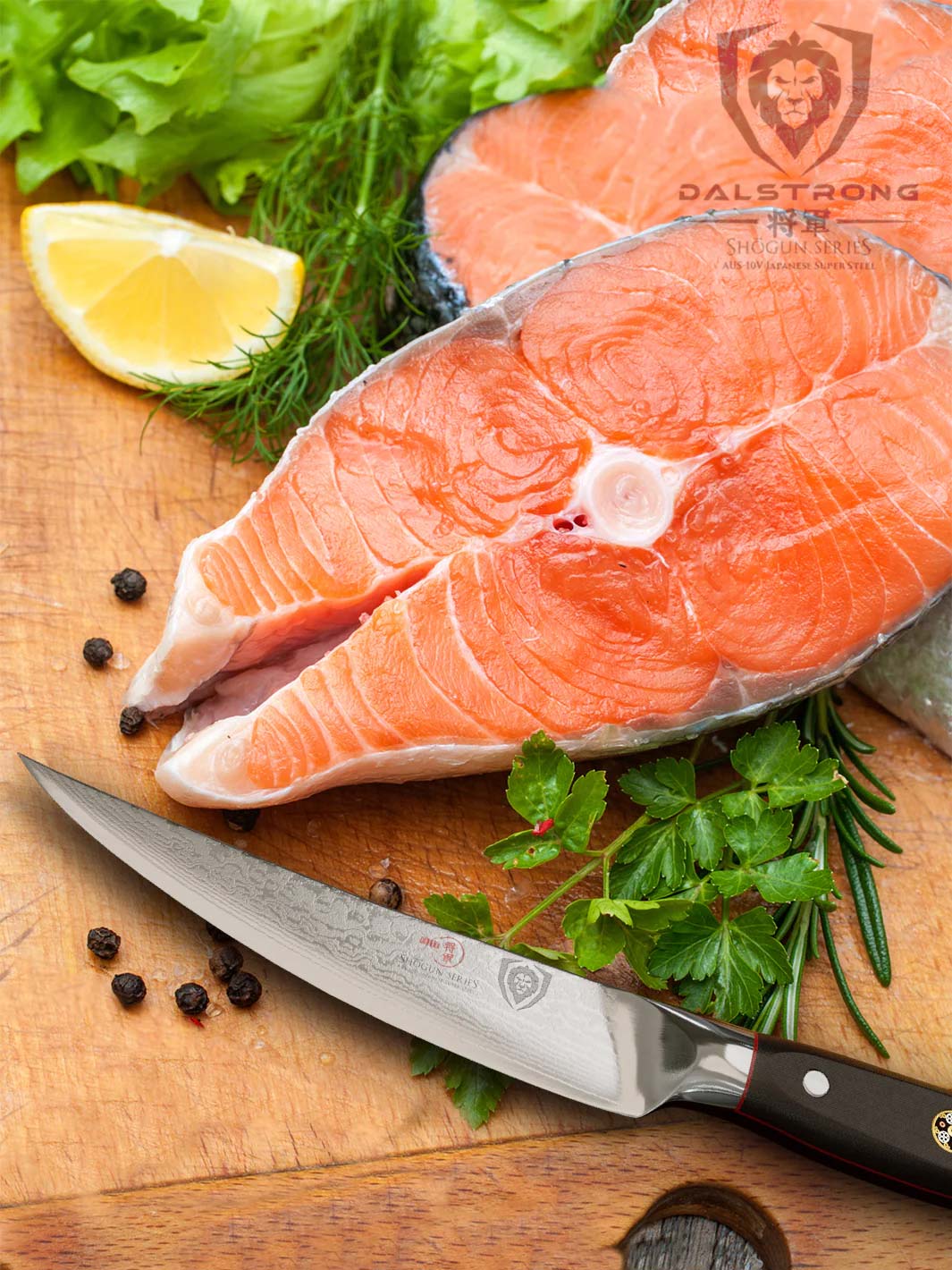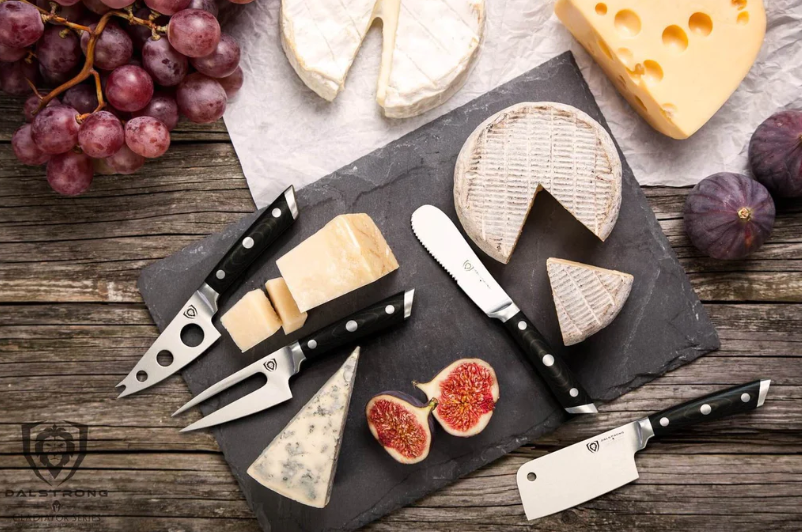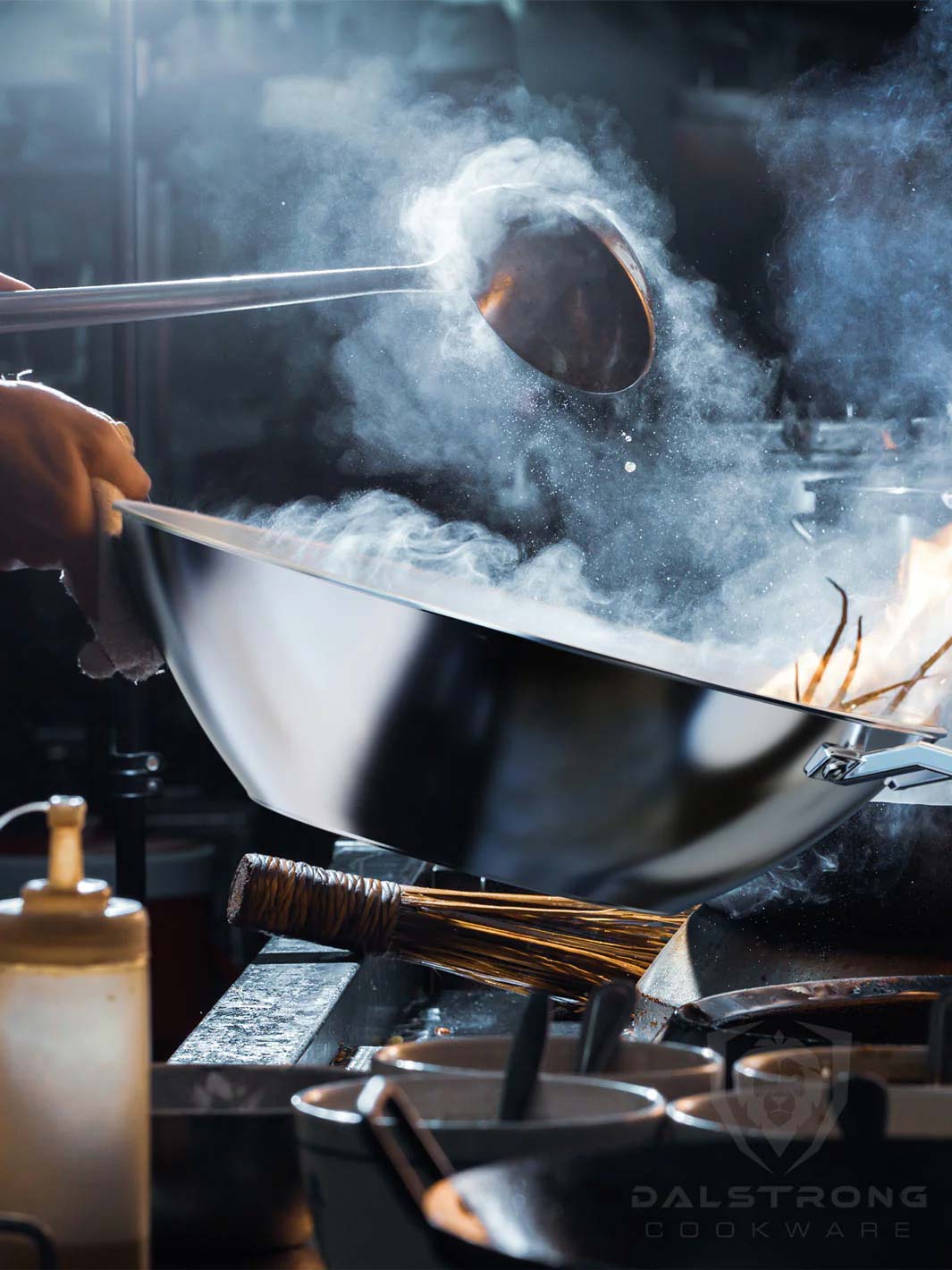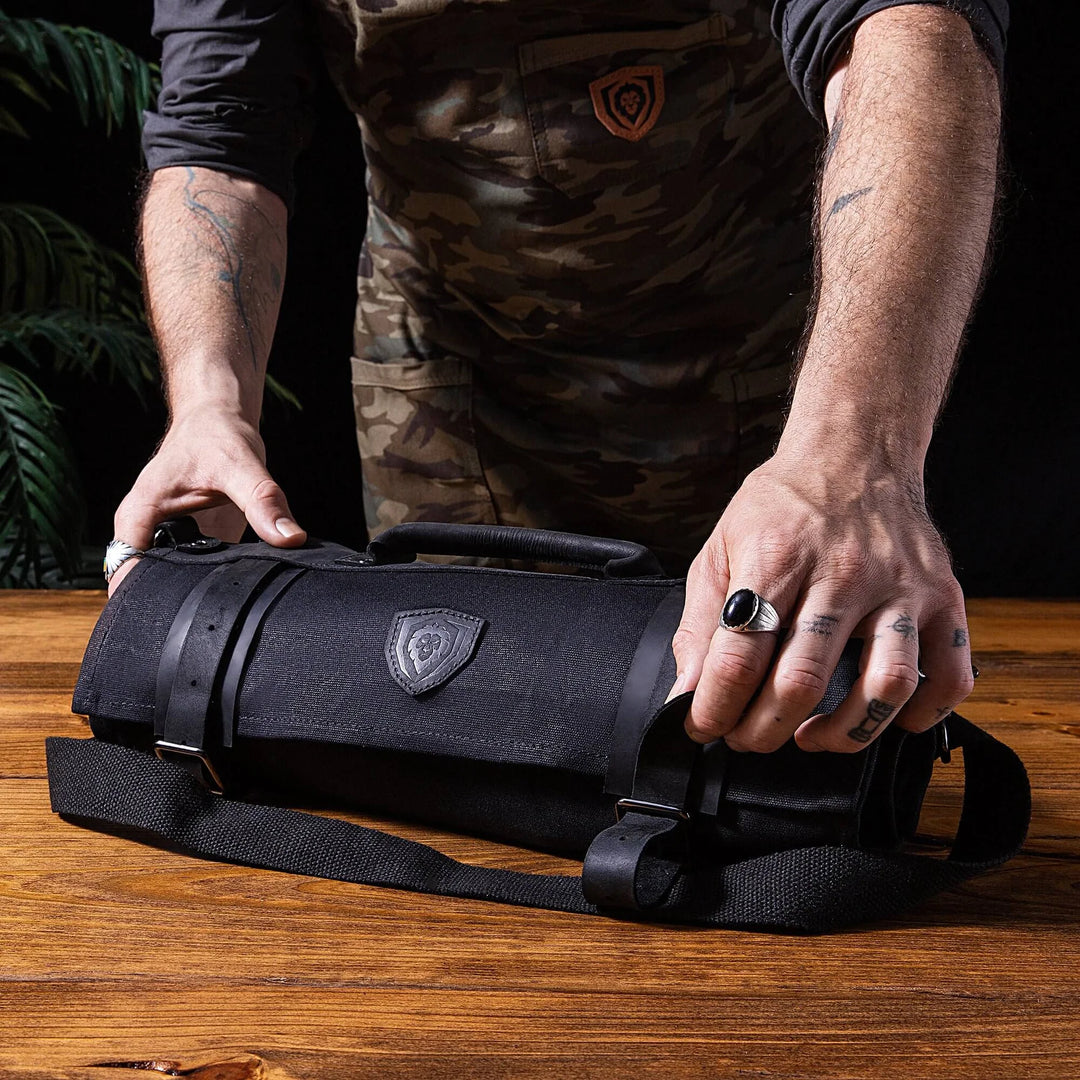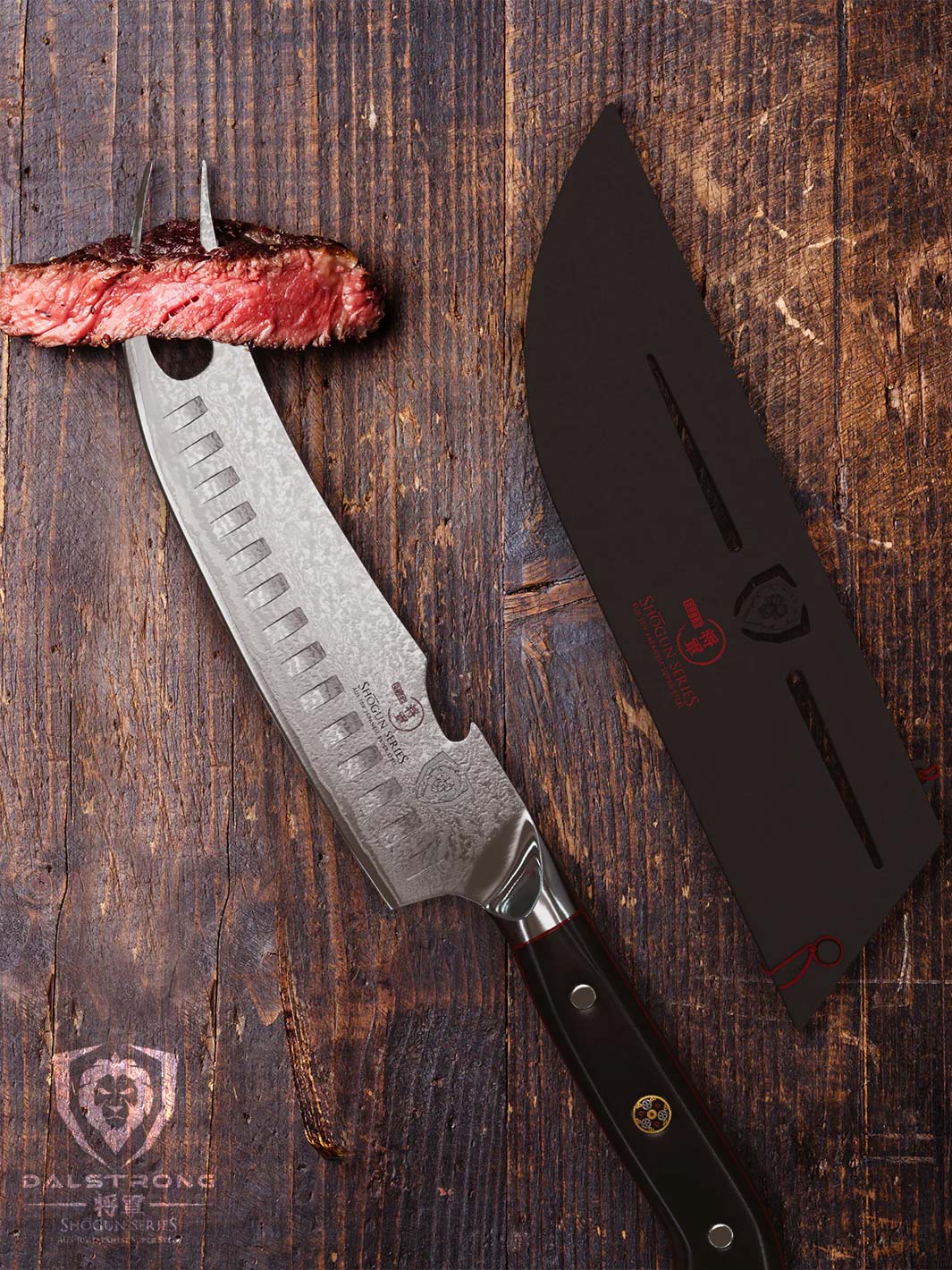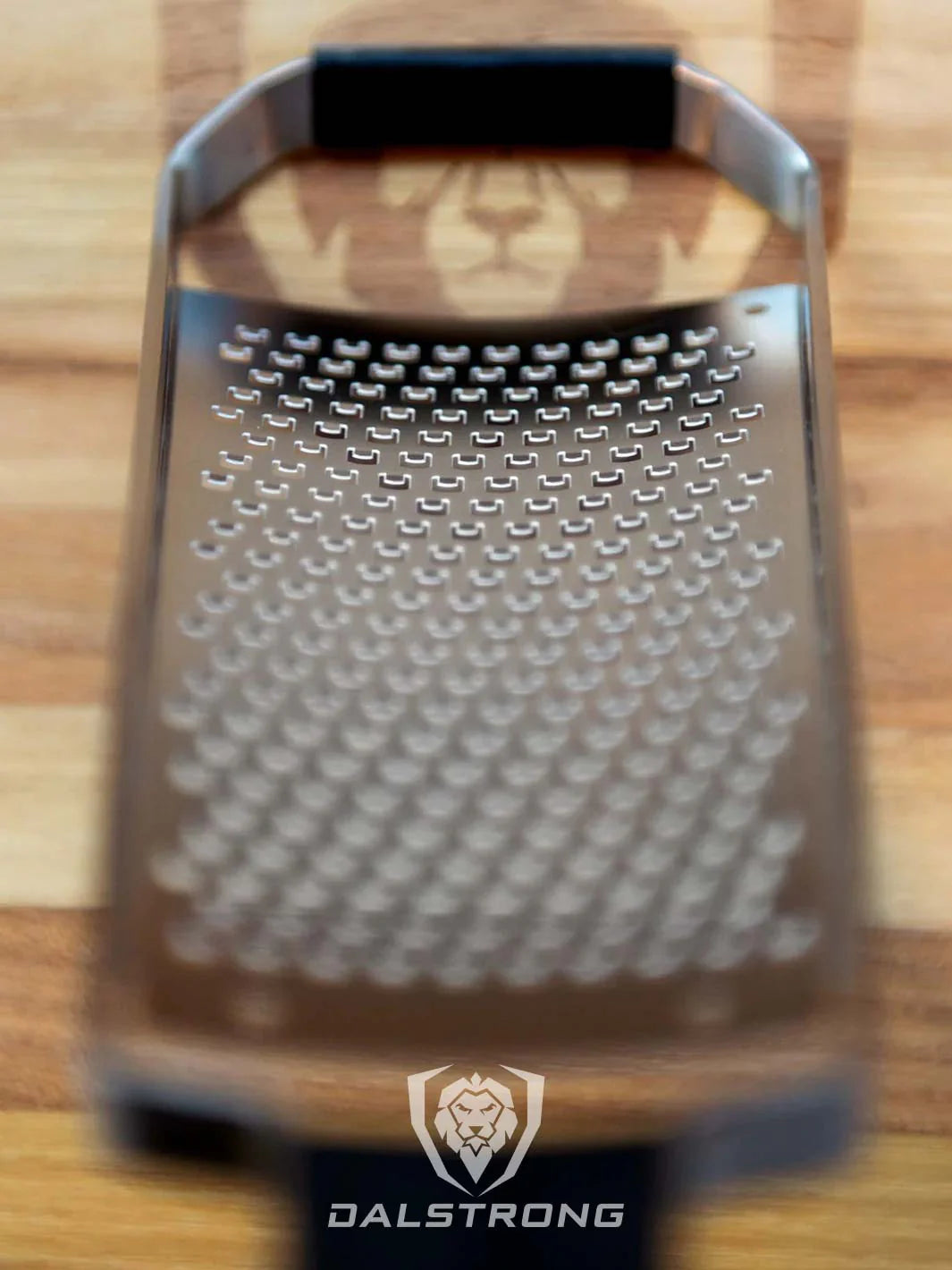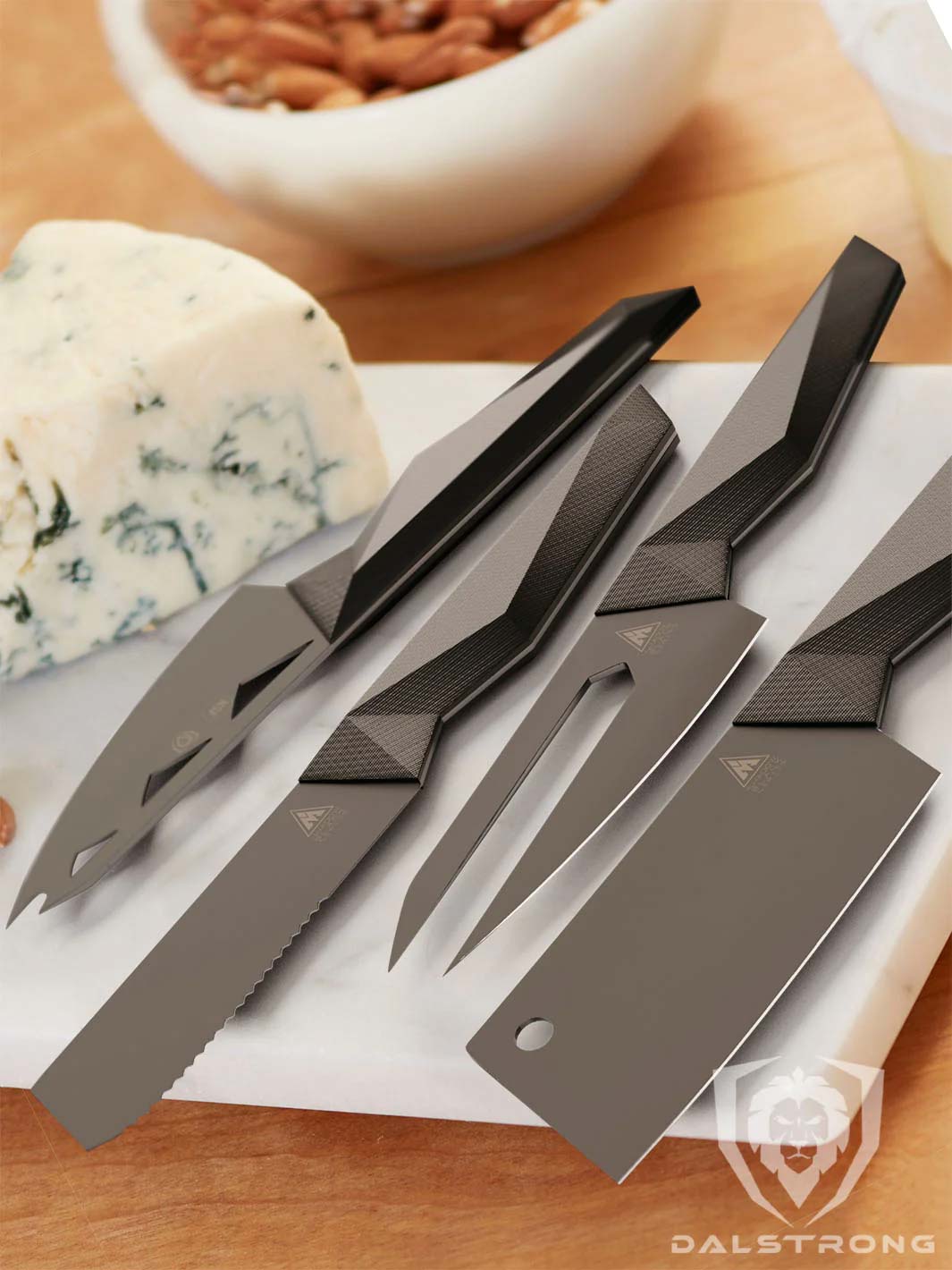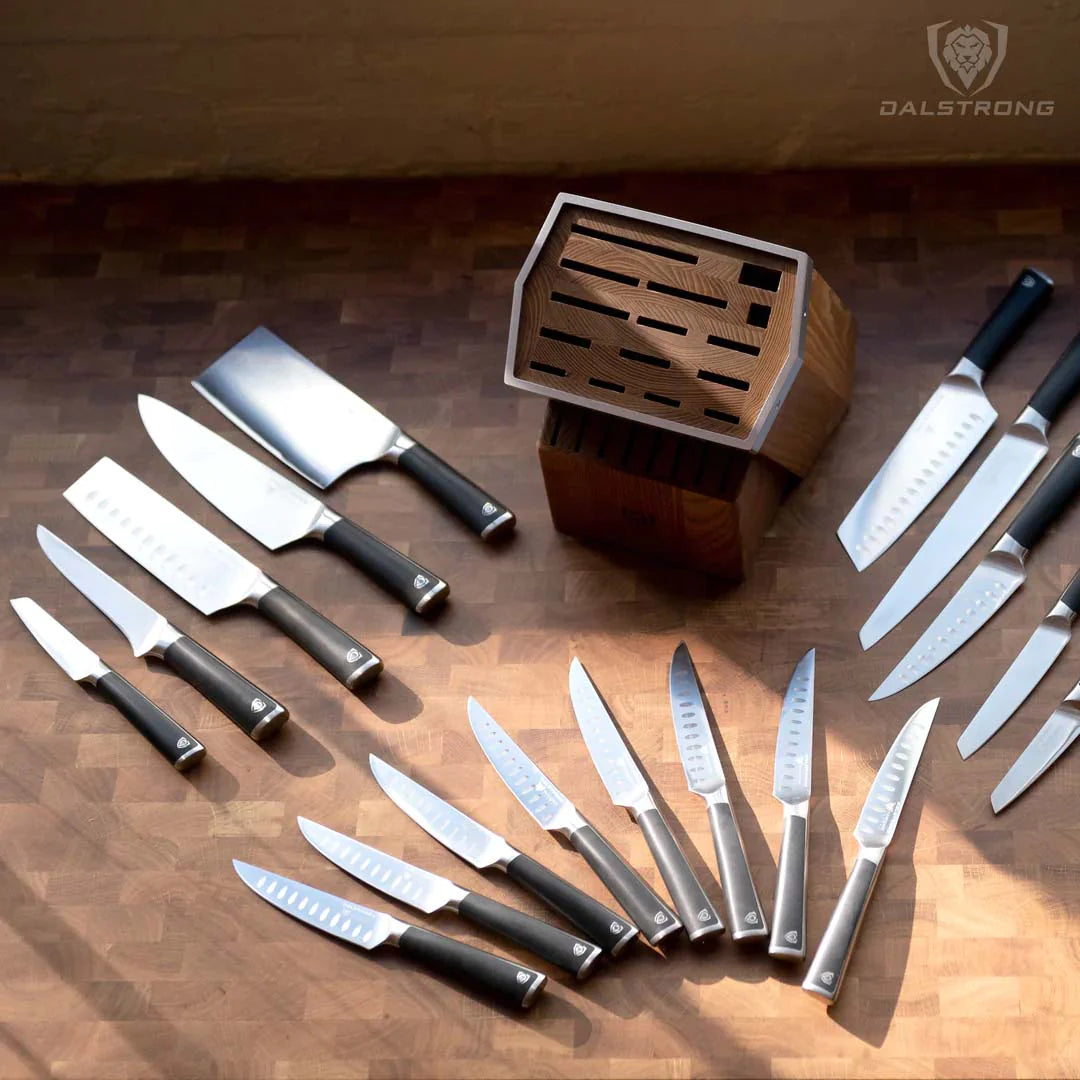How To Sharpen A Serrated Knife Properly
How to Sharpen a Serrated Knife:
- Place a sharpening rod inside the serrations of the blade
- Drag the rod across the serrations, one by one.
- Move it away from the blade for safety.
- Give each serration about four or five strokes.
- Little amounts of steel might remain attached to the blade (burrs).
- Run the sharpening rod up and down the blade to remove burrs.
Shadow Black Series 9'' Bread Knife
However experienced you are now, chances are you made a lot of mistakes during your days as a cooking novice. You might even cringe when you remember them. Maybe your lack of experience led you to taking the unnecessarily long and complicated route on the way to a simple task. Maybe you didn’t follow recipes correctly. Or maybe it was just a matter of using the wrong tools.
For me, it was the fact that for a long, long time I remained absolutely determined to use a smooth-bladed steak knife to slice my bread. Yes. I know. My shame knows no bounds.
Any time I needed to slice into a piece of bread -- whether it was a fresh loaf of sourdough, a baguette, or a nice focaccia -- I’d use my trusty steak knife for the job. That or just a standard kitchen knife. I thought that an excessive amount of crumbs on the counter, as well as jagged, irregular slices, were just a reality of life that I had to learn to accept. I thought it was the only way.
Boy, was I wrong.
I remember using my first serrated bread knife, and what an “eureka” moment it was. Using this serrated blade was like finding the missing puzzle piece that made everything else snap into place. Suddenly, I had this excellent tool that I didn’t know I even needed, to perform tasks I didn’t know I was doing wrong! It was epiphanic.
So much about feeling comfortable in the kitchen is knowing that you have the right tools for the job, and this is why serrated knives are such an absolute wonder. They may perhaps not be as active as other members of your knife gallery, but when deployed properly they really do make things so much easier and more enjoyable.
Sometimes you find that the small inconveniences you’d long accepted as inevitable parts of life don’t actually have to be that way. That there are ways around them, and someone just has to point you in the right direction.
With this in mind, let’s talk about what a serrated knife is, why you need to use it, and how you can ensure that your serrated blade stays as sharp as possible… with or without a sharpener.
1. What is a serrated knife?
The Frost Fire Series 8'' Serrated Bread Knife
A serrated knife blade follows the same basic principle as a saw: it has “teeth” on the blade that will grab on to hard exteriors and then slide smoothly all the way down (here’s a perfect example).
This makes them perfect for use on crusty breads, making quick work of them without destroying them in the process. And as someone who has needlessly damaged so much bread due to not using a serrated bread knife, I know how important this is.
Your trusty straight edge chef’s knife can do a lot, but it’s not always the best tool for every single kitchen task.
But that’s not everything that makes serrated knives great. No, there’s another reason, one that has to do with the durability of the blade over months and the upkeep you have to perform to keep it functioning at a high level: you will rarely find yourself needing to sharpen a serrated knife.
Keep in mind: there are some knife makers who claim you will “never have to sharpen” their serrated knives. They might be right, but what they’re saying here isn’t that the blade is so high-quality that it will never require sharpening. Instead, when the knife starts going dull, you are expected to simply dispose of it and buy a brand new one.
When you come across these cheap serrated knives, you’ll be able to feel the flimsiness of their construction in your hands. These are not high-quality products, and their apparent affordability is only an illusion; in the long run, you’ll end up spending more money on replacements than you would on a high-quality blade.
2. What causes knives to go dull?
Crusader Series 8'' Bread Knife
Let’s take this opportunity to take a step back and think about why most blades go dull and require a sharpener in the first place.
You might find it surprising to learn that in the majority of cases, what makes blades dull isn’t the food you’re using it on, but the cutting board below. Every time you run your knife through a piece of food and meet the surface of the cutting board on the other side, the edge is going to suffer, potentially bending it over backward (which can be fixed with a manual knife sharpener like a honing steel or ceramic honing rod).
It is also possible that, as a consequence of striking the cutting board for so long, the sharp edge has been worn down and is now rounder rather than sharp and angular. In those cases, you’ll have to actually reshape the metal by grinding away at it for a bit. For this, you’ll need a sharpening stone.
We went into detail on several different methods for sharpening knives with different types of sharpeners here; be sure to check them out if you want to learn how to keep your blades at their absolute peak performance. Using a sharp knife is more effective as well as more enjoyable.
Because of their construction, serrated knives very rarely need to be sharpened. The sharp edges of a serrated knife are recessed, which means they don’t touch the cutting board. The pointed serrated teeth do most of the work. So if your serrated knife is a high quality product (like this 6 inch precision forged blade, or this beautiful set over here) it’ll be years before you see any type of degradation in its performance and find yourself needing a sharpener.
3. Can serrated knives be sharpened?
Dalstrong Gladiator Series 7.5'' Serrated Chef Knife
It is fully possible that after a long time you start to notice your serrated knife isn’t performing quite as smoothly as it used to. If you slice through a piece of bread and start to notice crumbs on your counter when it used to go clean through, this is a sign that your serrated knife might be in need of some maintenance with a sharpening tool.
As we mentioned before, there seems to be a strangely pervasive idea within culinary communities that it’s not worth splurging on a high-quality serrated knife, and that buying an inexpensive one is good enough. The idea being that when the cheap blade is no longer at peak performance, you’ll dispose of the dull knife and replace it with a new one.
Of course, we recommend against this; it’s a short-sighted perspective, and continuously buying inexpensive knives is going to very quickly surpass the cost of one high-quality product. Sharpening isn’t such a scary thing that you need to resort to this!
If you buy a quality serrated knife made of high-carbon steel, you’ll have a durable knife with fantastic edge retention that will take years before it needs to be sharpened.
So can serrated knives be sharpened? Absolutely! Knife sharpening doesn’t have to be a scary proposition. All you need is a sharpener, which could be a ceramic sharpening rod (the preferred method), or some easy to find household items (the DIY method). You’ll see what we mean in just a moment.
Check out the best knife sharpeners here!
4. How to sharpen a serrated knife
Sharpening steel can be a pretty terrifying notion if you’re brand new to it. But don’t worry: making that blade edge sharp again doesn’t have to be a daunting ordeal.
One thing that should be noted is that serrated knives are very different from straight edge knives, so a lot of the knife-sharpening methods you could use for regular kitchen knives can’t be applied to the former. Look closely at your serrated knife; see how it’s made up of individual curved serrations? Each one of these beveled serrations will be sharpened individually, one at a time.
In order to do this, we need a serrated knife sharpener called a sharpening rod. Sharpening rods are similar to honing steels, but they’re smaller and sturdier, tapering off to a point. That means that along the shaft of the ceramic rod you’ll have many thicknesses to choose from, allowing you to adapt it to the different widths of the knife’s serrations.
First, hold the sharpening rod in your dominant hand, with the knife held in your opposite hand, the serrated side pointing away from you. Set the sharpener in the serration you want to sharpen (you can start from the top of the beveled edge if you’re doing all of them, or simply focus on the one serration you want to give some attention to). It should be set at the same angle as the grind.
Slide the sharpening rod away from you, dragging it across the serration and stopping when the diameter of the rod is the same width as the serration you’re working on. Sharpen each serration to its given width or you might damage the knife blade. It should only take a few passes for each serration. Follow this process until you notice a thin strip of steel developing on the cutting edge. This is called a burr.
Burrs are minute amounts of steel that sometimes remain partially attached to the blade. You can use the sharpening rod or stone to remove the burr, simply running it up and down the edge of the blade from end to end. Put away your sharpener and you’re done. Easy peasy. Now you’ve sharpened one of the most important knives in your kitchen.
Learn more about where Dalstrong Knives are manufactured here!
See? Serrated knife sharpening is much easier than you thought.
5. Frequently asked questions about sharpening serrated knives
Can I sharpen a serrated slicer or serrated electric knife?
Absolutely! The sharpening method described above works for any knife with a serrated edge. This includes slicers, like the serrated slicers you can use for brisket and such. An electric knife with a serrated edge also benefits from an occasional session with a sharpener, and even a serrated pocket knife!
Can I use an electric knife sharpener on a serrated blade?
To quote Reverend Lovejoy, the answer is “‘yes’ with an ‘if,’ or ‘no’ with a ‘but’”. Electric sharpeners are very convenient and a lot quicker than doing things manually, but they do relinquish a fair bit of control. And when doing knife maintenance, you want as much control as possible, especially to avoid losing any serration.
There’s also the fact that not every electric sharpener works on serrated blades. When deciding on which electric sharpener to buy, keep an eye out for this detail; if you make a mistake, you will permanently and irrevocably damage your beautiful serrated knife.
How can I sharpen a serrated knife without any special tools?
We just went over sharpening with a sharpening rod, which is probably the most common method for you to perform manually. However, some folks don’t have easy access to a sharpening rod, or any kind of knife sharpener, and might want to try another method. A surprisingly popular one involved using coffee mugs.
Coffee mugs to sharpen a knife edge? I know, it sounds weird, but it’s a real thing! In this case, it’s taking the place of the ceramic rod. As with every method, we recommend exercising some caution to keep from hurting yourself.
The first thing you need to do is to look for the coffee mugs that have enough rough space around the bottom. That’s coffee mugs, not teacups; teacups are way too delicate for this type of work. You probably would want to go with an older mug, since we’ll be making marks on it as we go.
Turn the mug upside down and locate a smooth, flat surface where you can place the cup. Be careful here; if the cup ends up slipping, you might hurt yourself. A good trick to avoiding this is to place a damp cloth underneath the cop, keeping it in place.
Hold the bottom firmly, and place the serrated edges against the rough bottom. Then move it up and down along each serration, just as you would with a sharpening rod. You can use the edges of the mug to ensure that the knife’s serrations don’t expand. Rock the knife back and forth about four times with the same pressure. And if you get any burrs, you can use fine-grit sandpaper to remove them.
What other steps can I take to ensure my serrated knife stays sharp as long as possible?
There are many things you can do to keep your serrated blade as sharp as possible for a long period of time, and we’d be remiss not to mention storage. Proper storage is essential to knife maintenance, which a lot of people don’t realize. Don’t just throw your knife in a drawer! Check out some elegant and practical tools to store your knives safely when you’re not using them.
Check Out Dalstrong's Serrated Knives
70 Day Money Back Guarantee with ALL Dalstrong Knives.
You can also check in with our Expert Knife Finder Quiz and get specific recommendations based on your needs.
Written by Jorge FarahBorn on the coast of Colombia and based in Buenos Aires, Jorge is a cooking enthusiast and kitchenware obsessive with a tremendous amount of opinions.






































































































































































